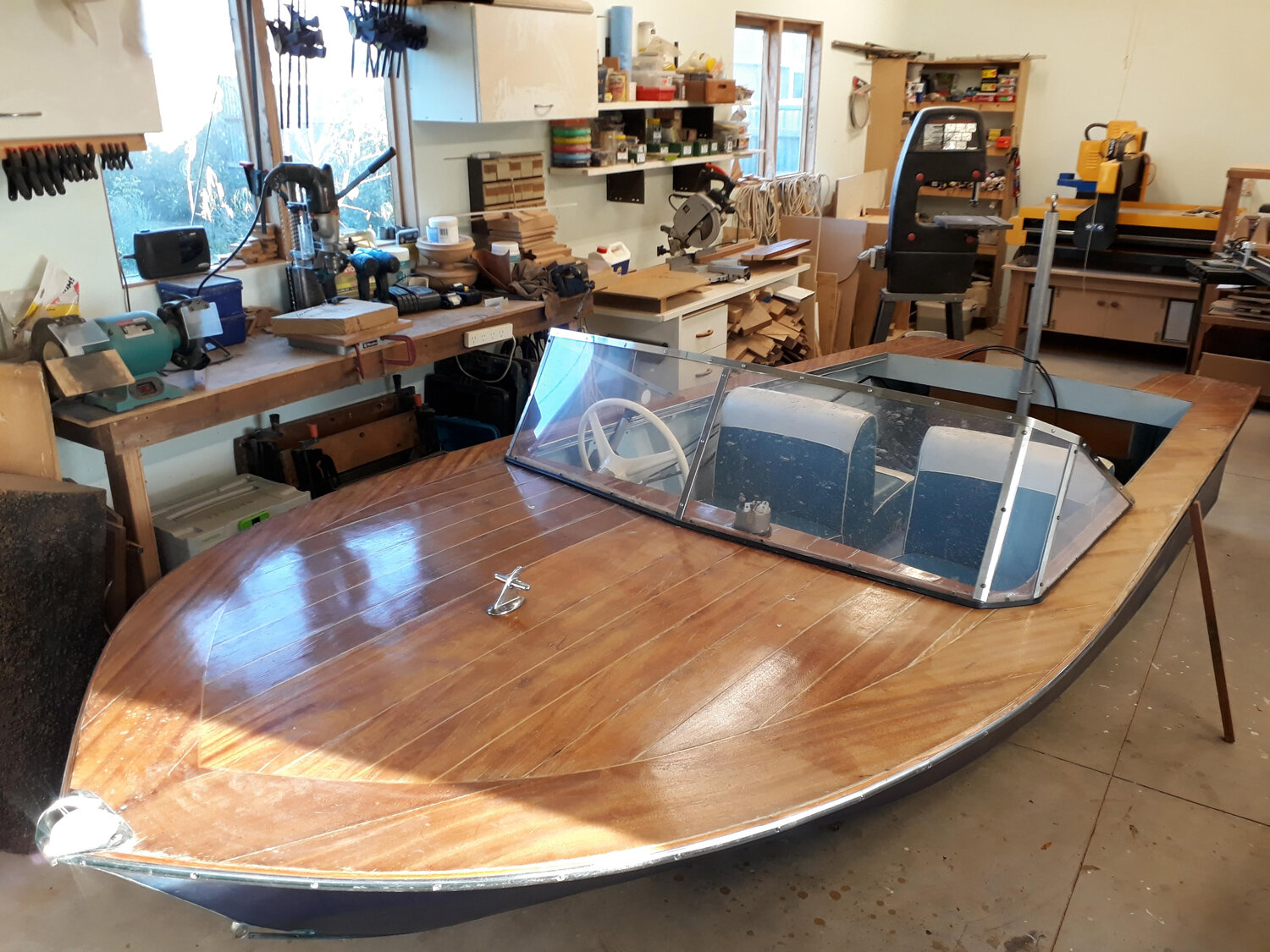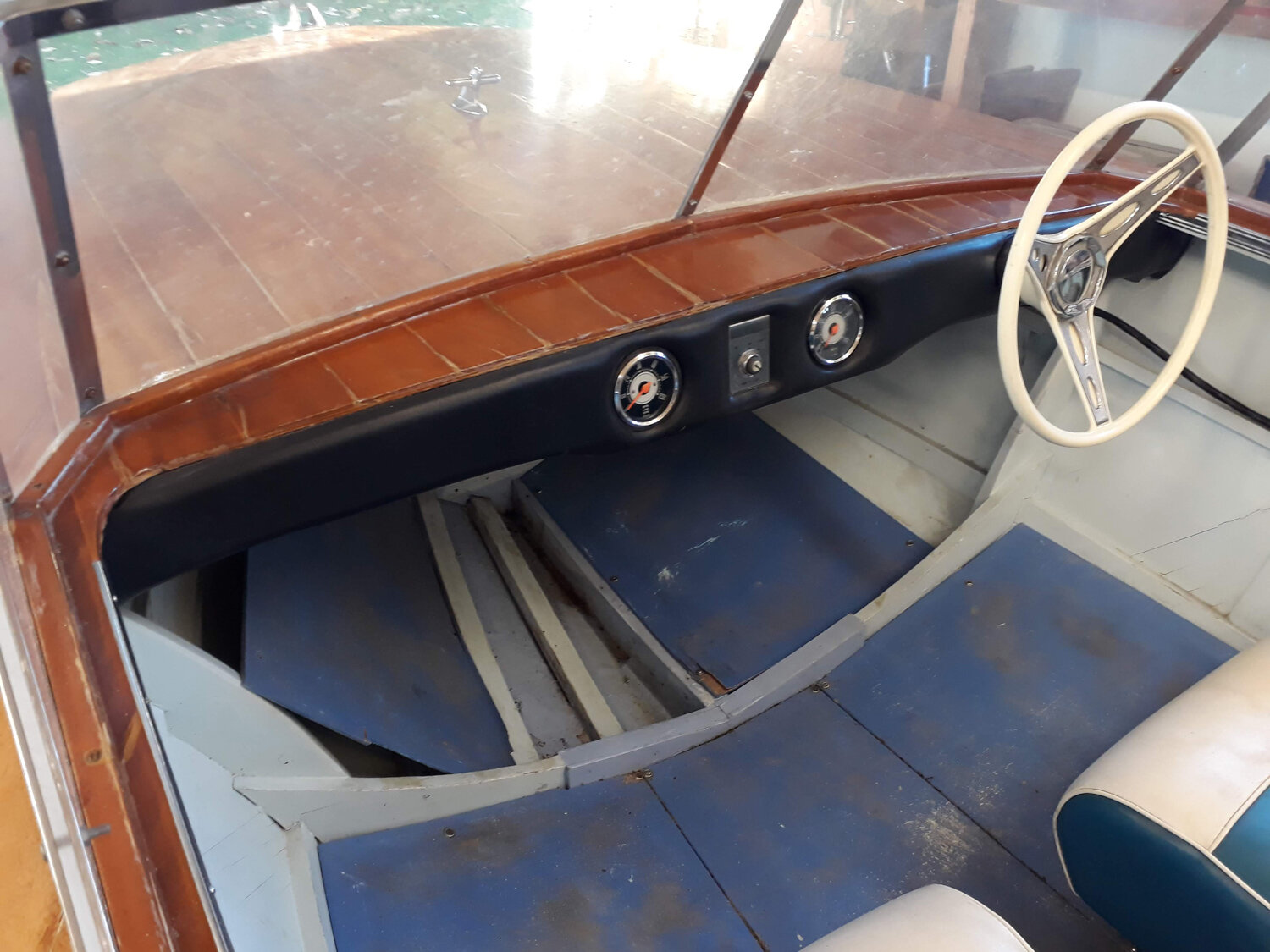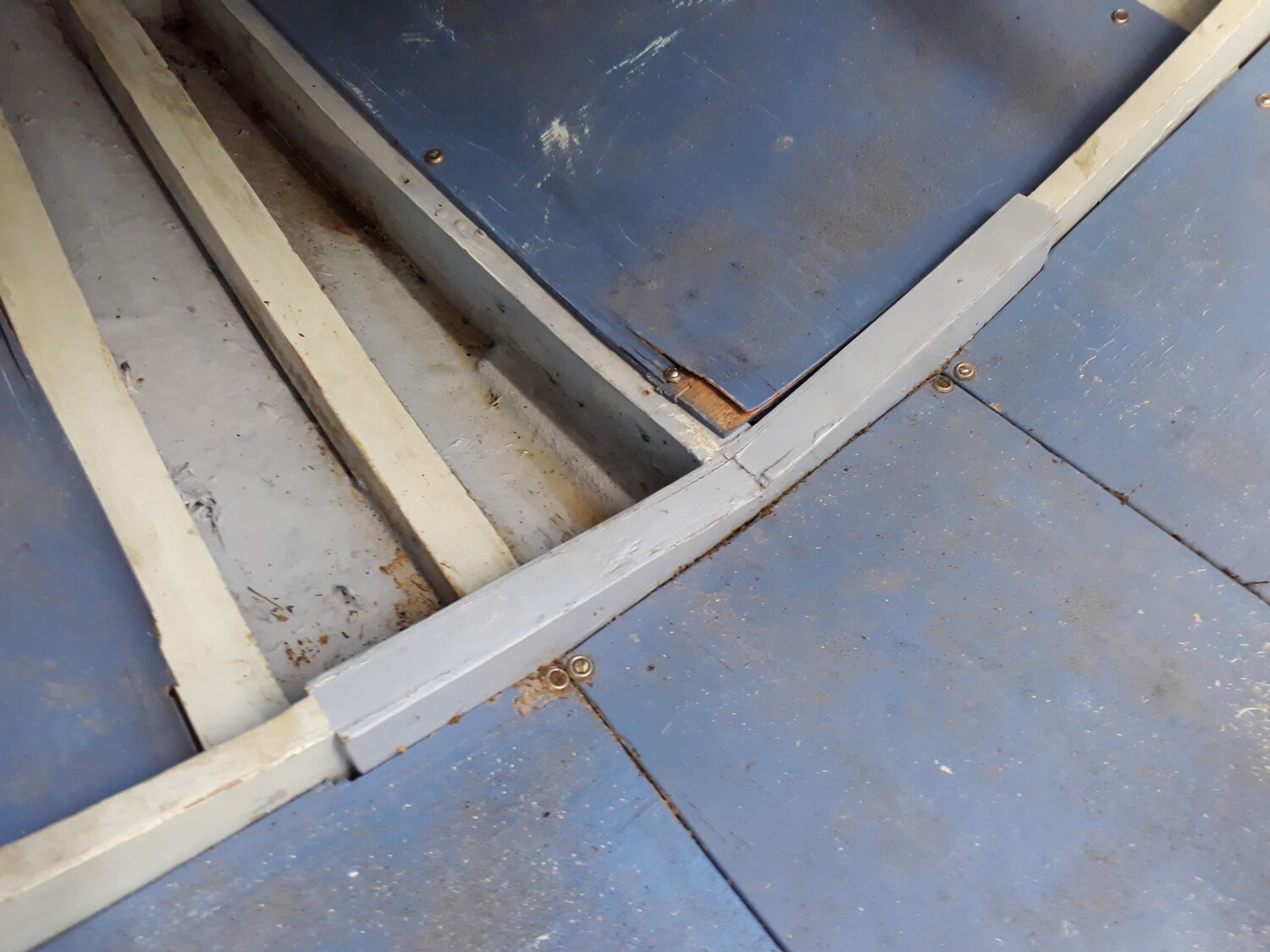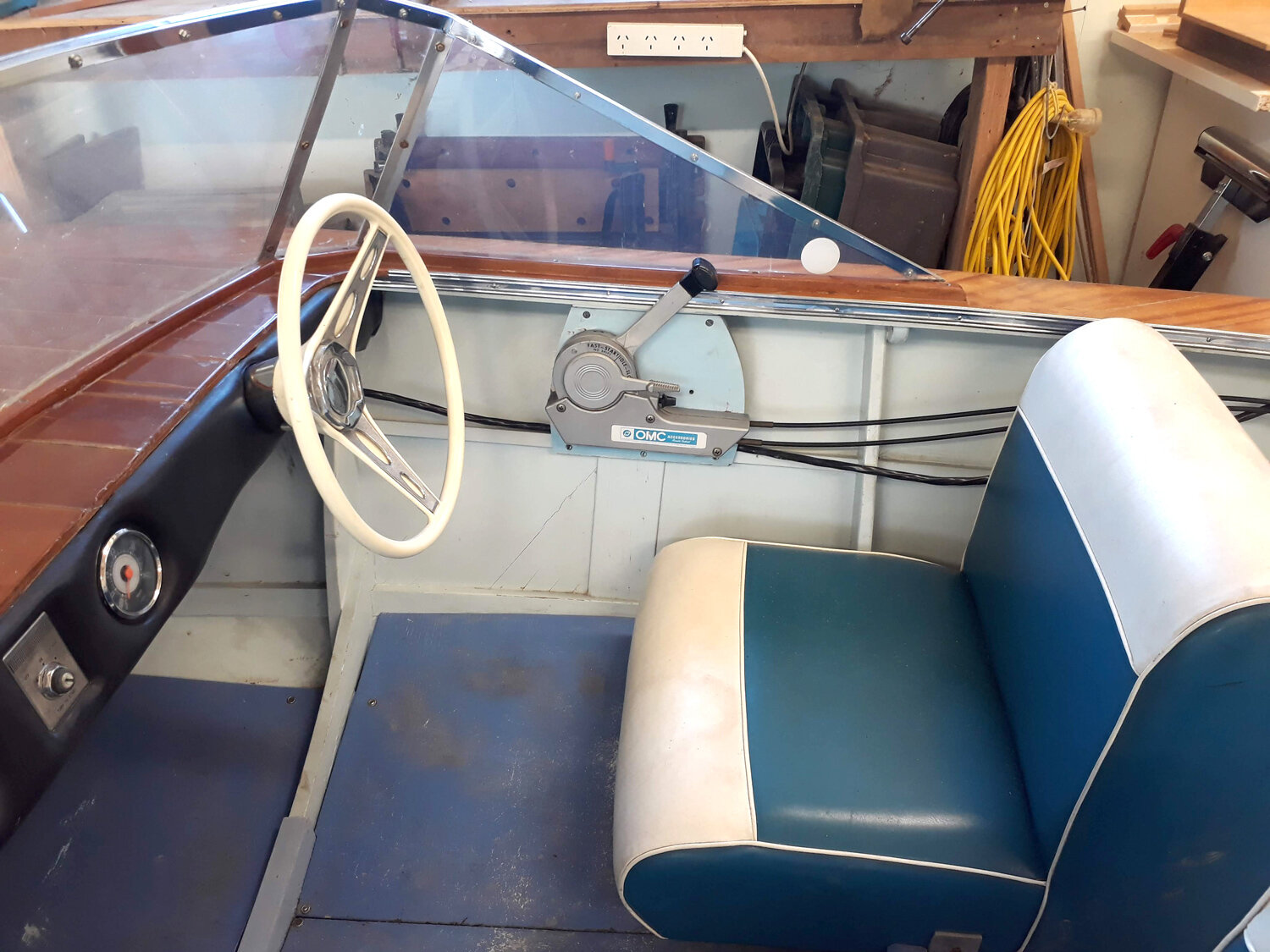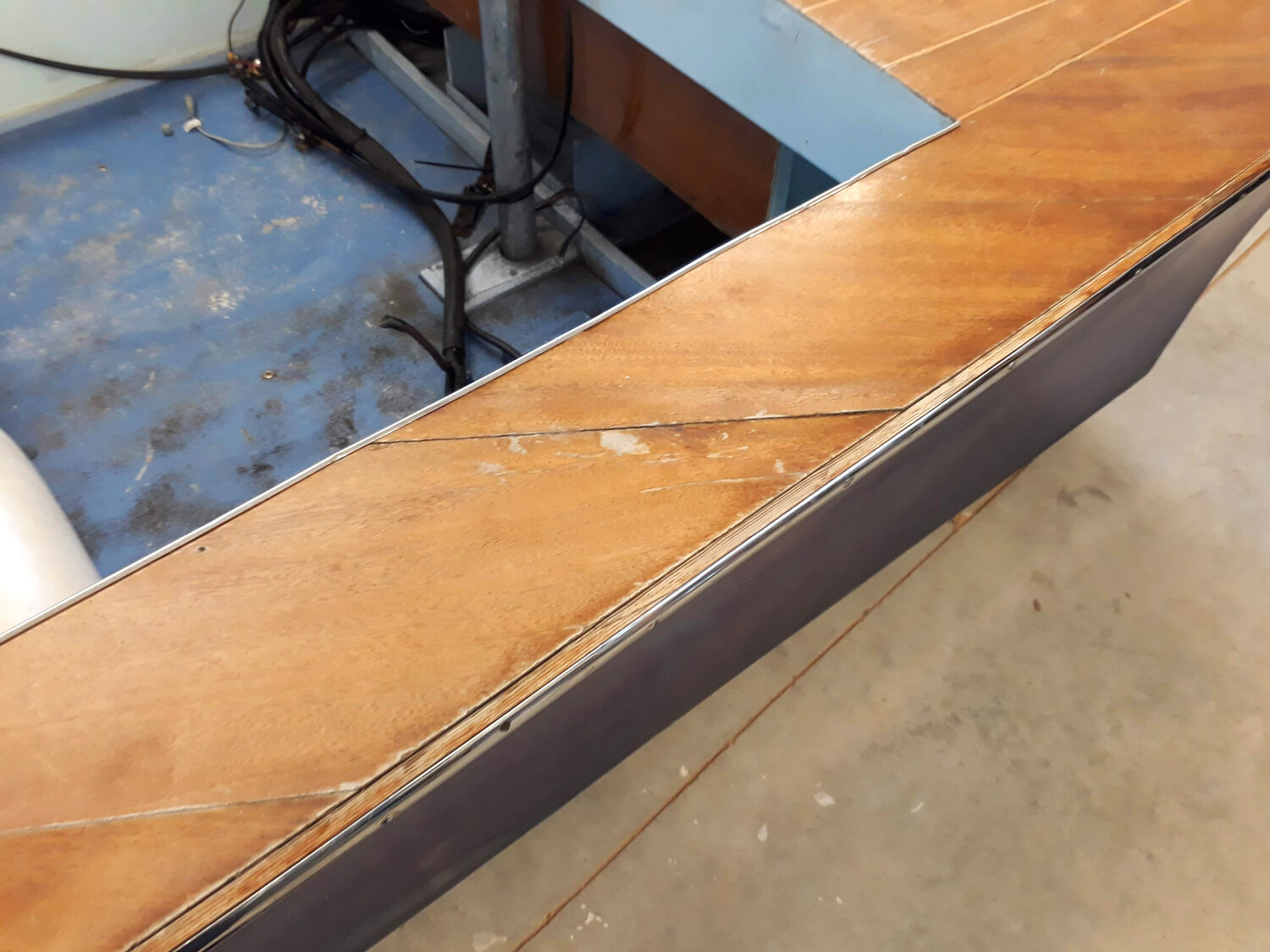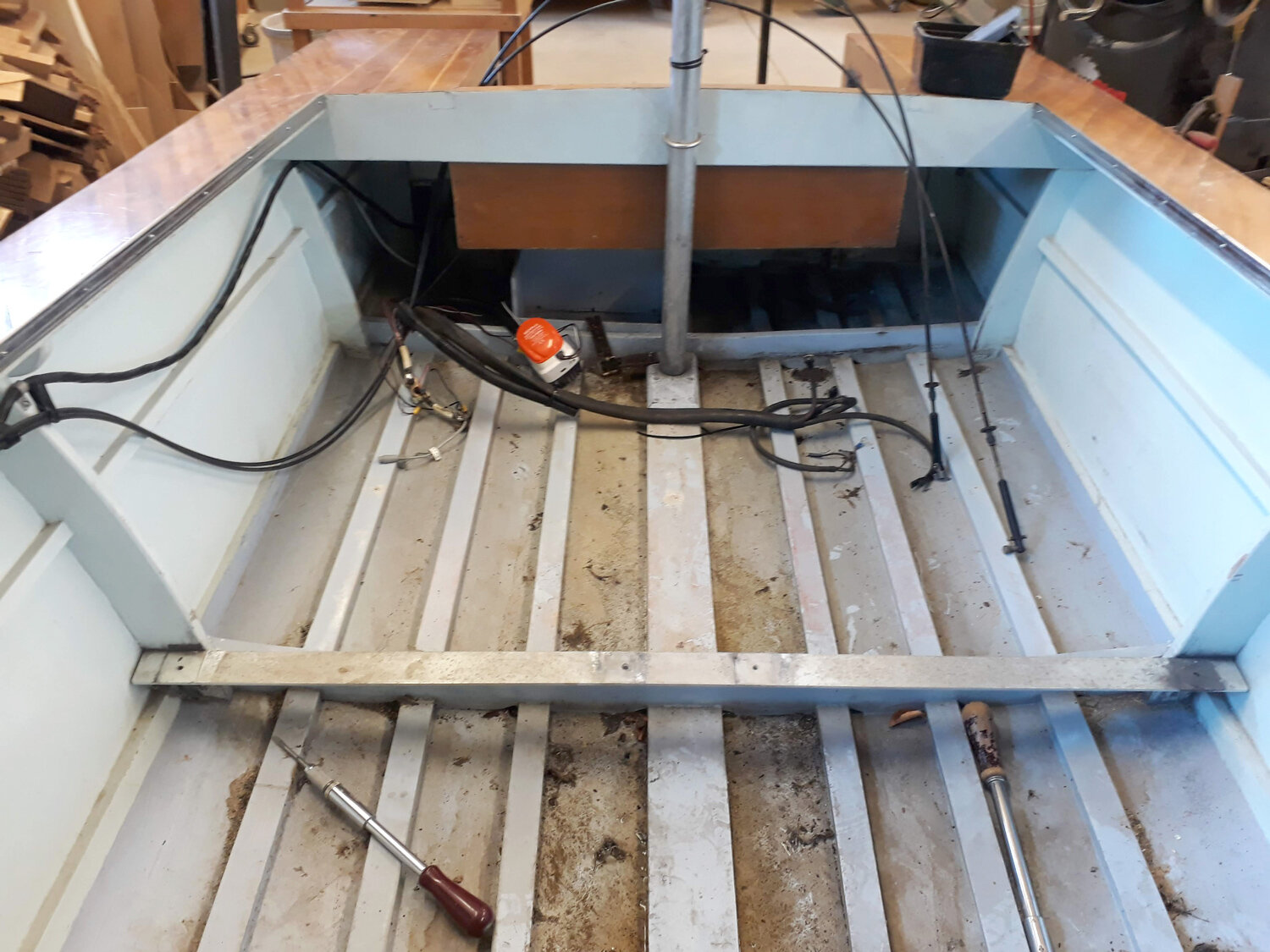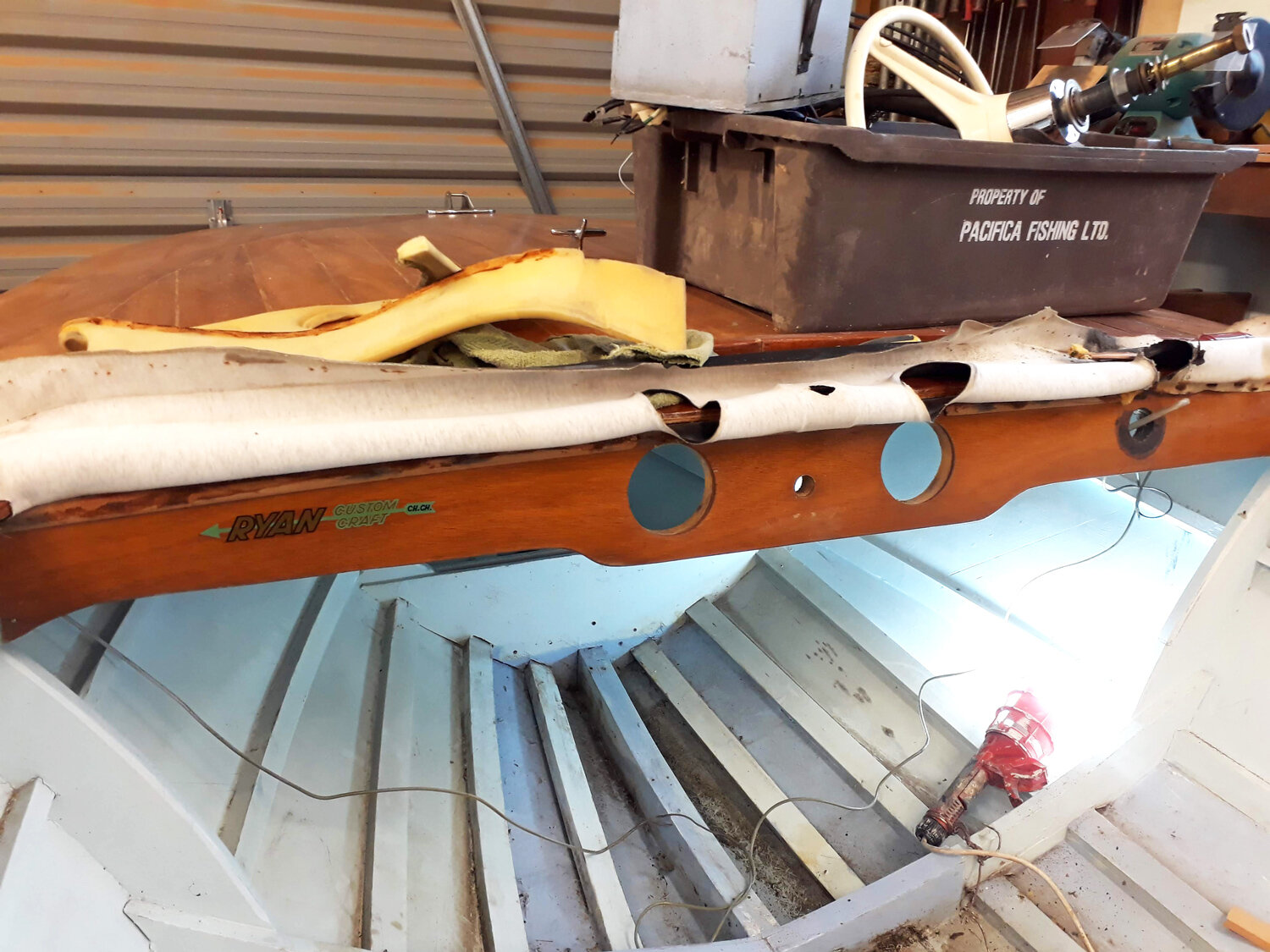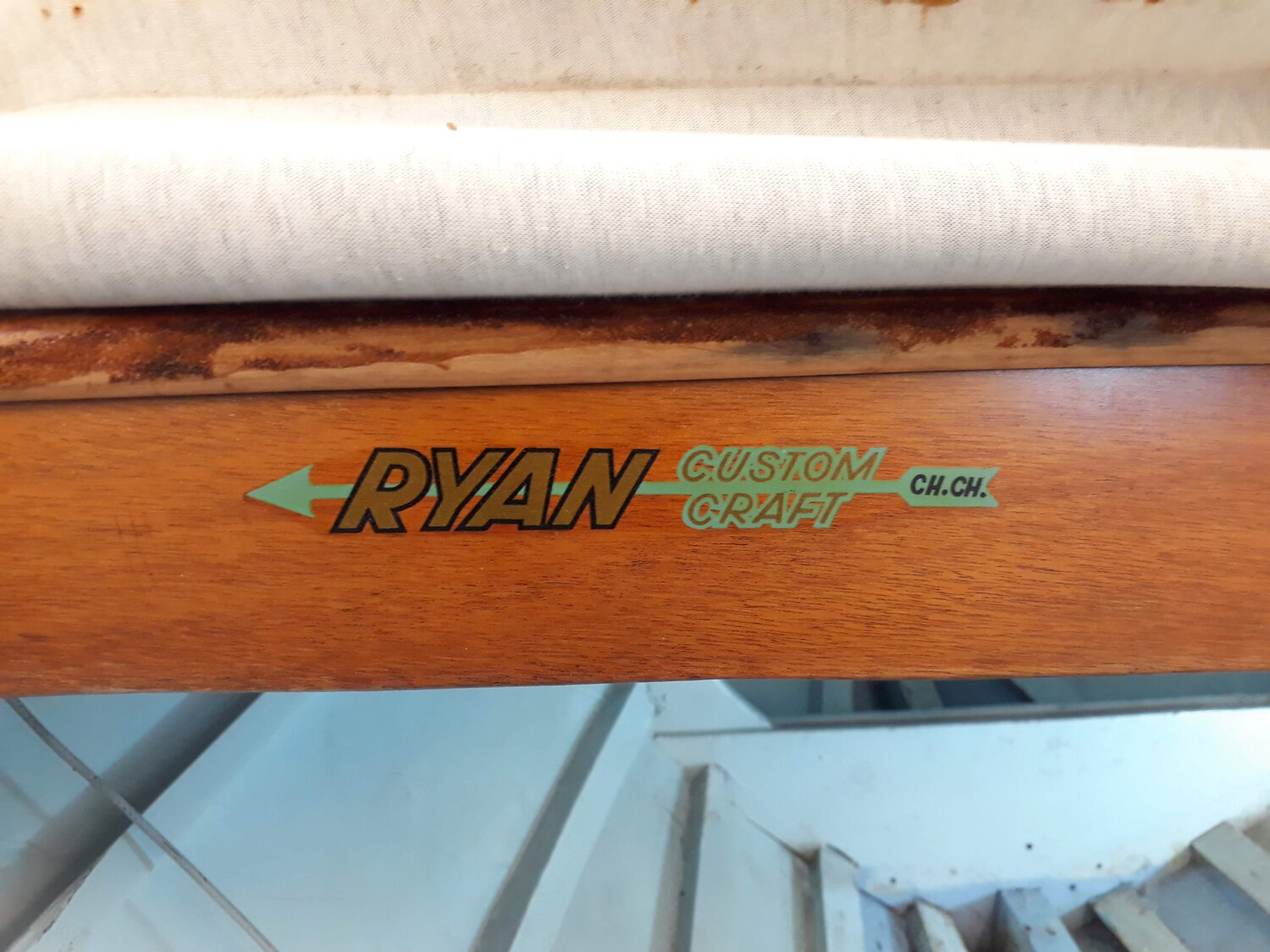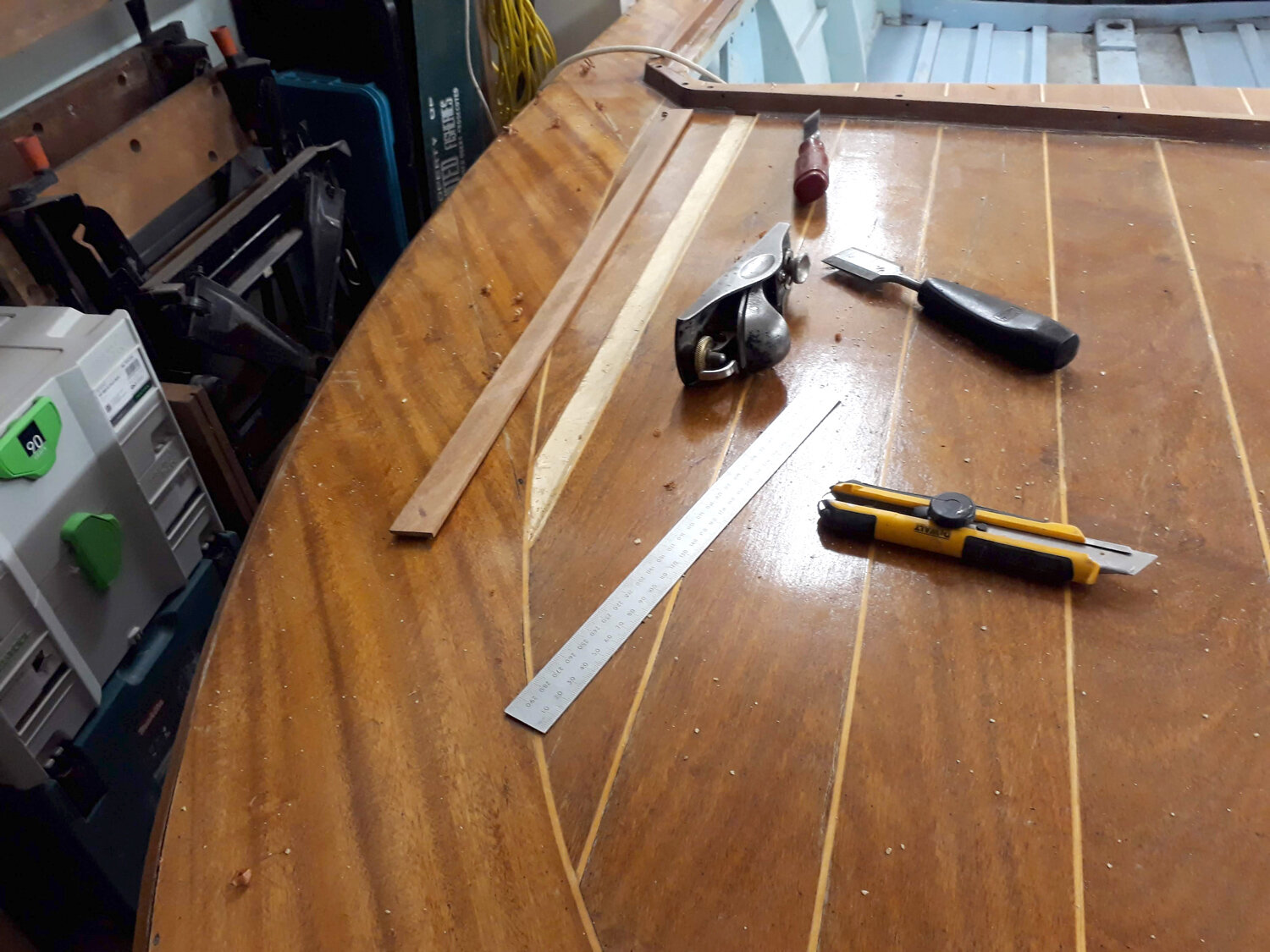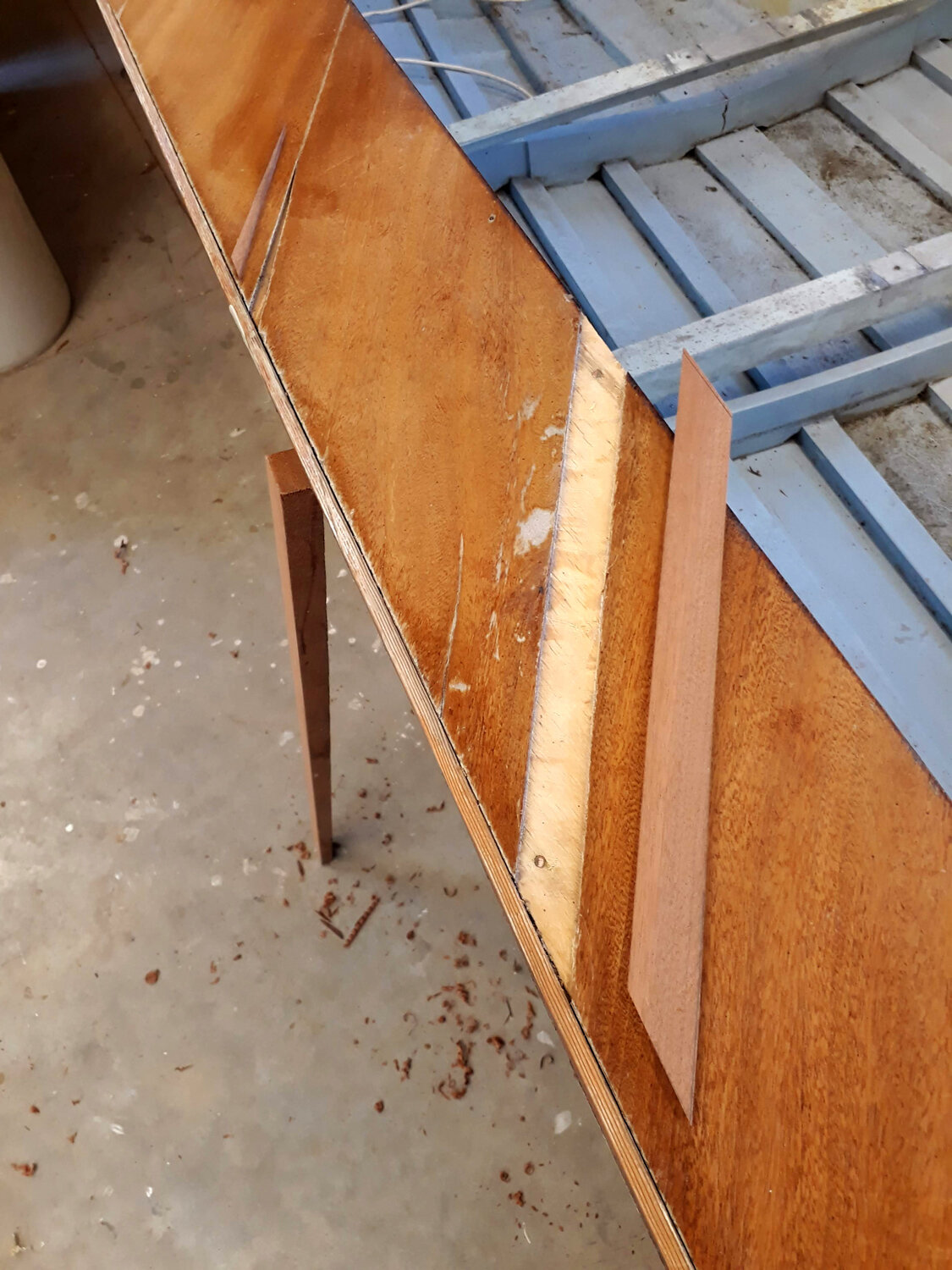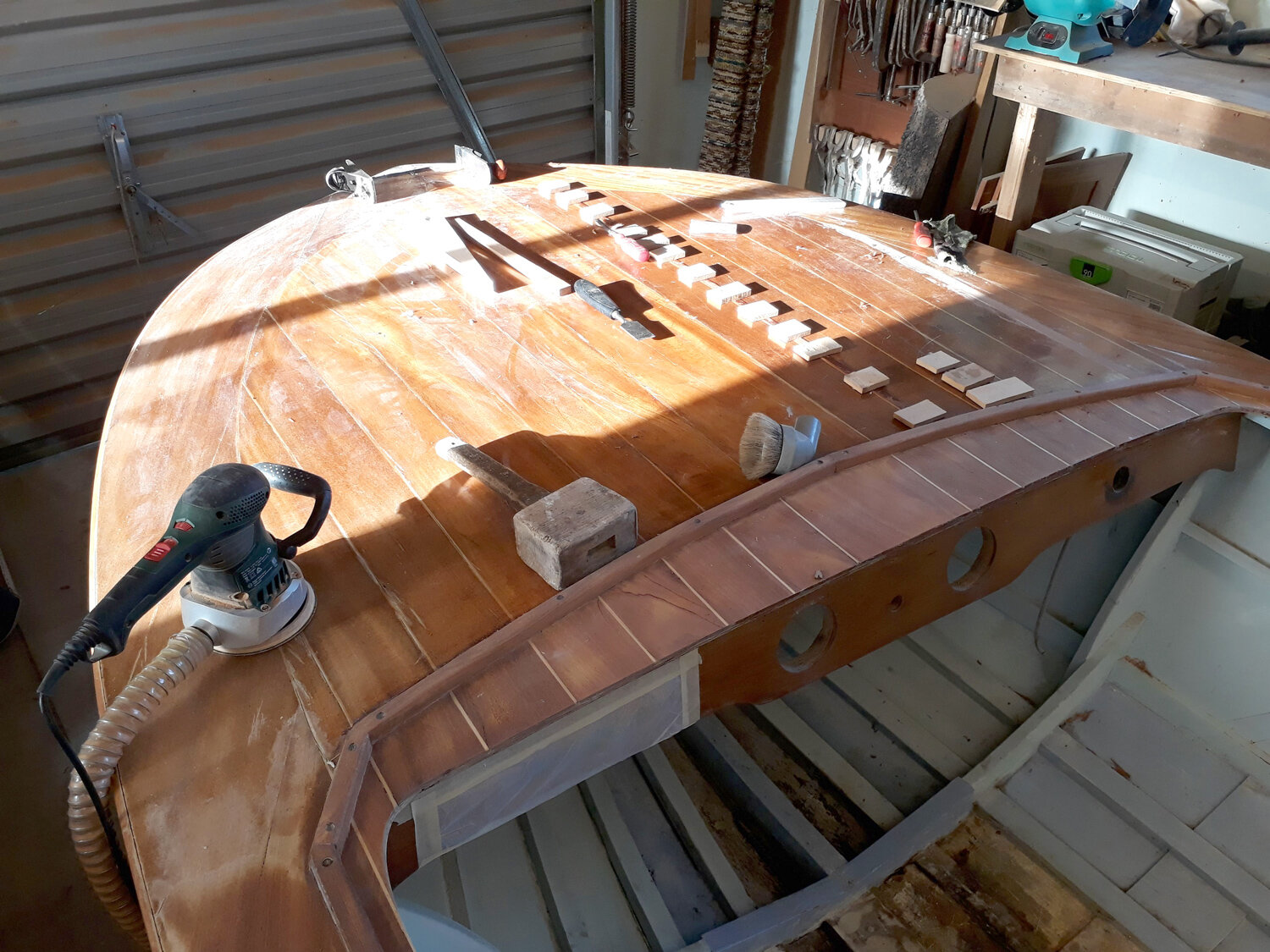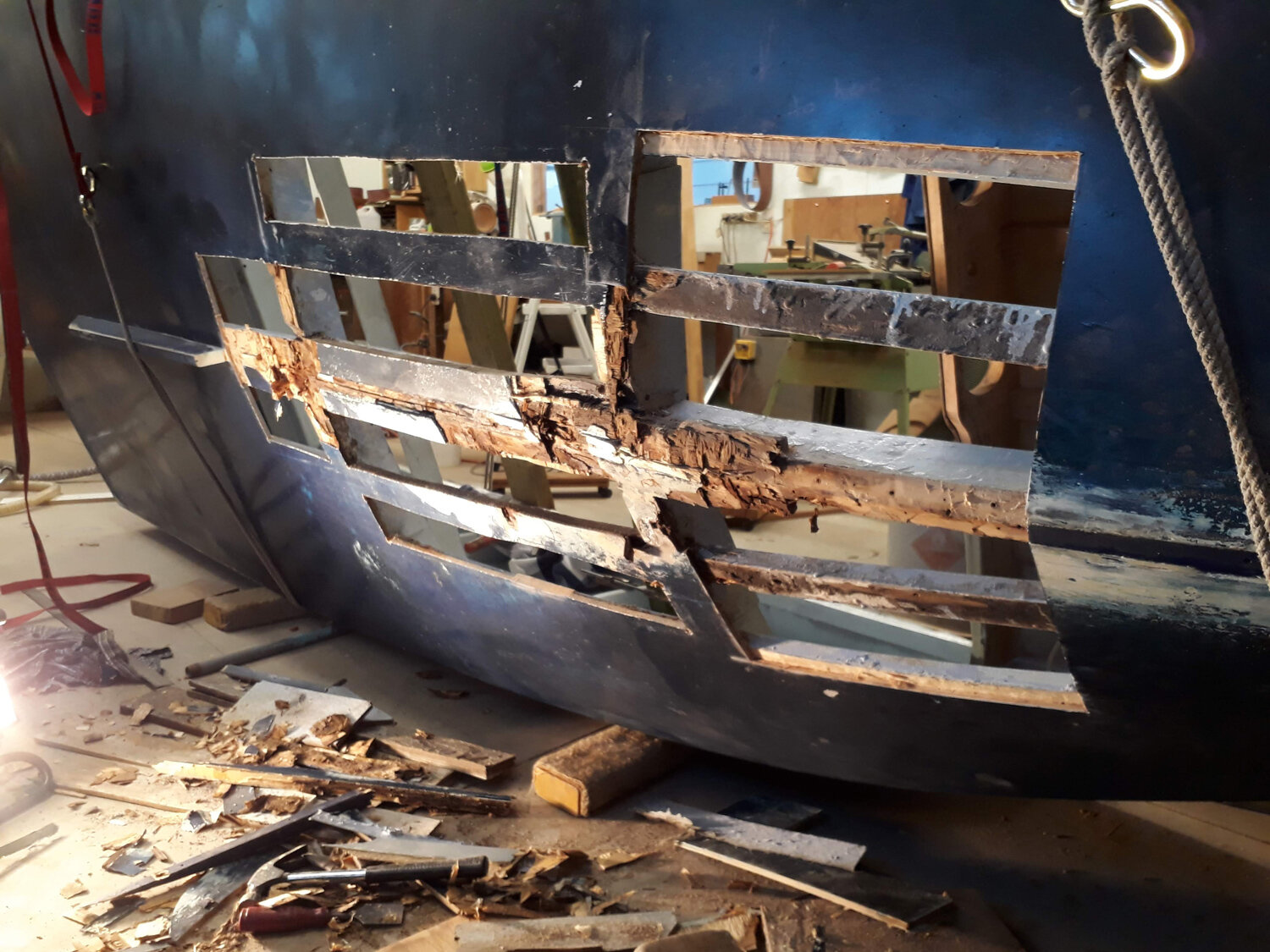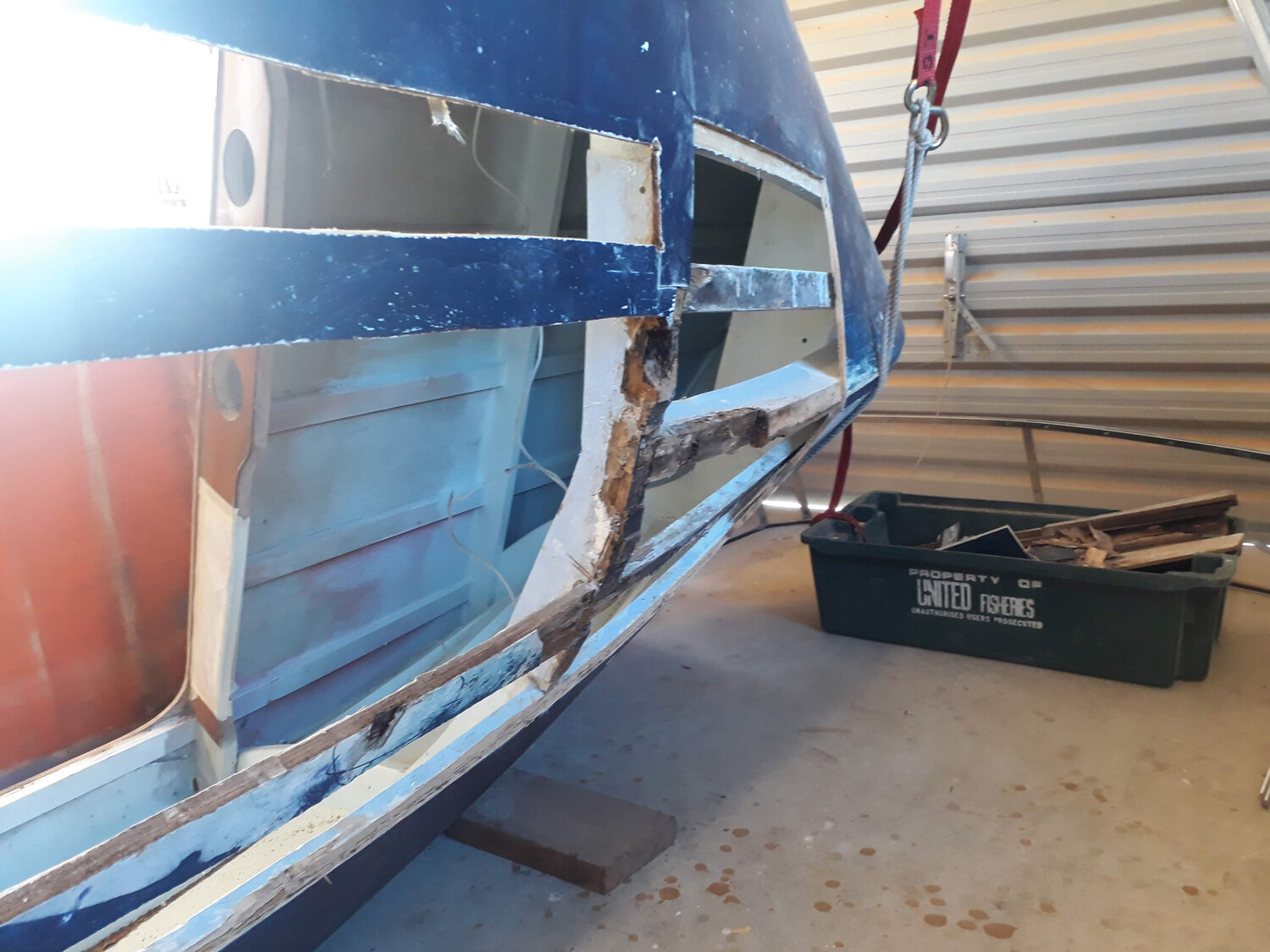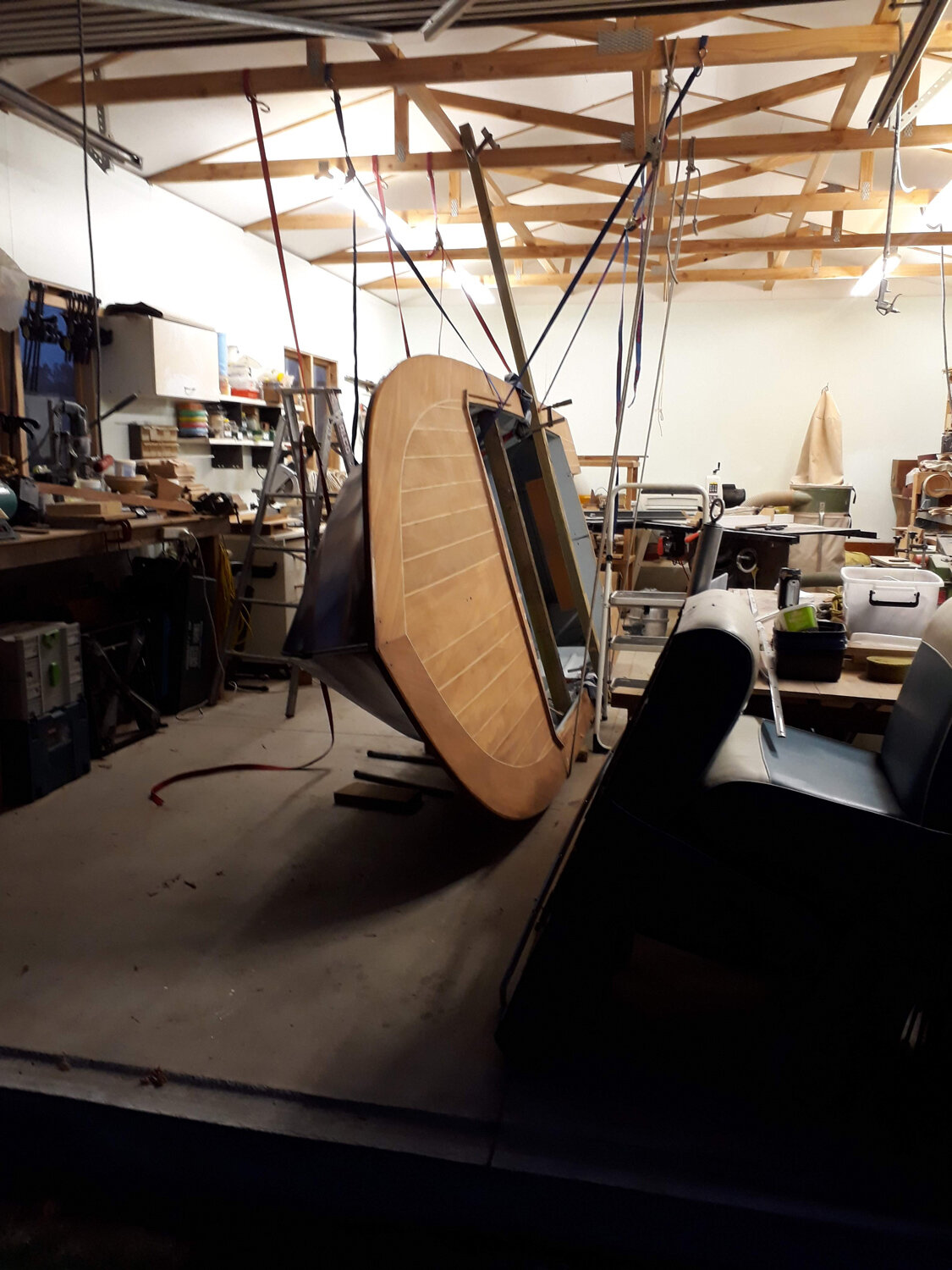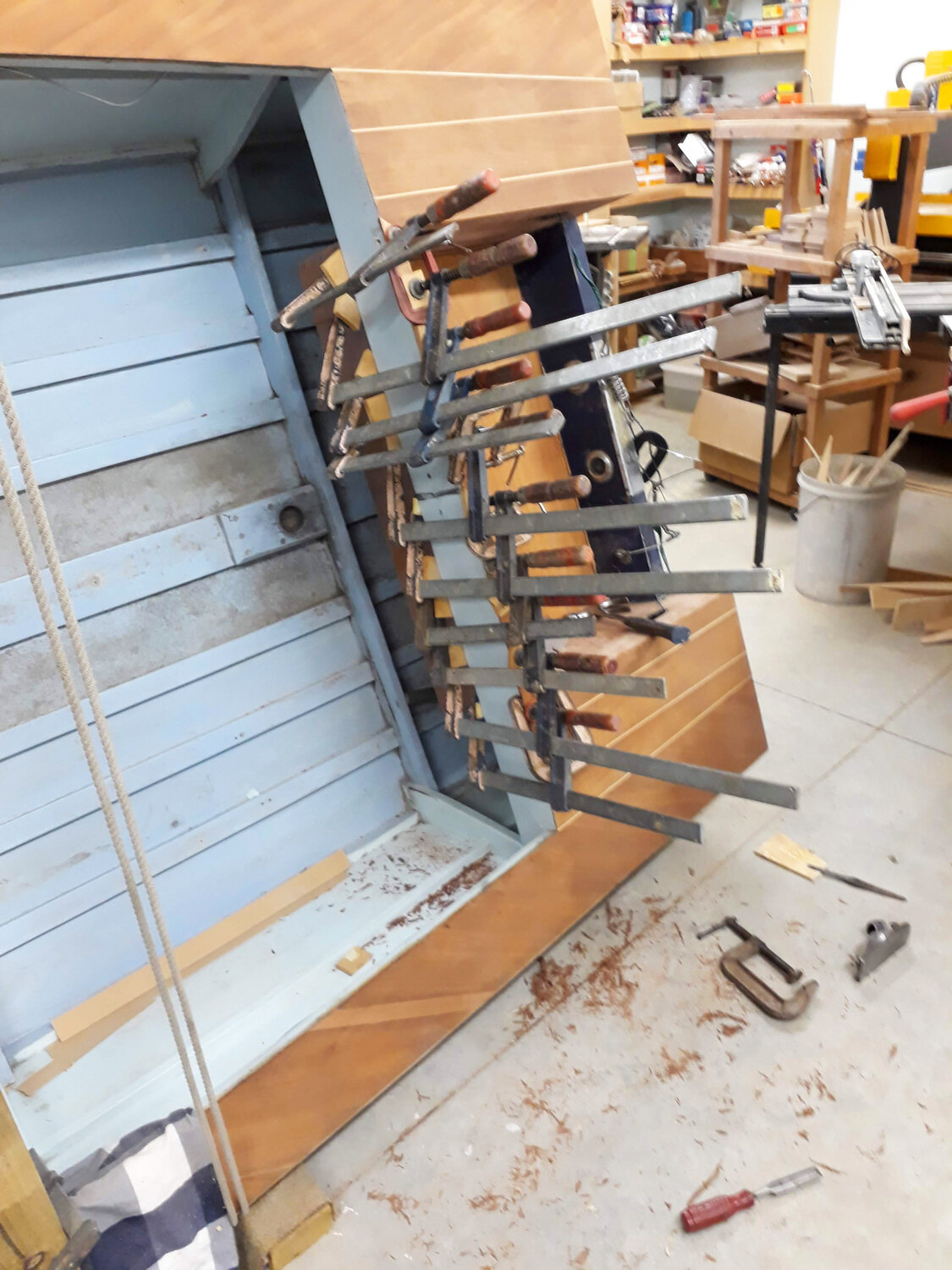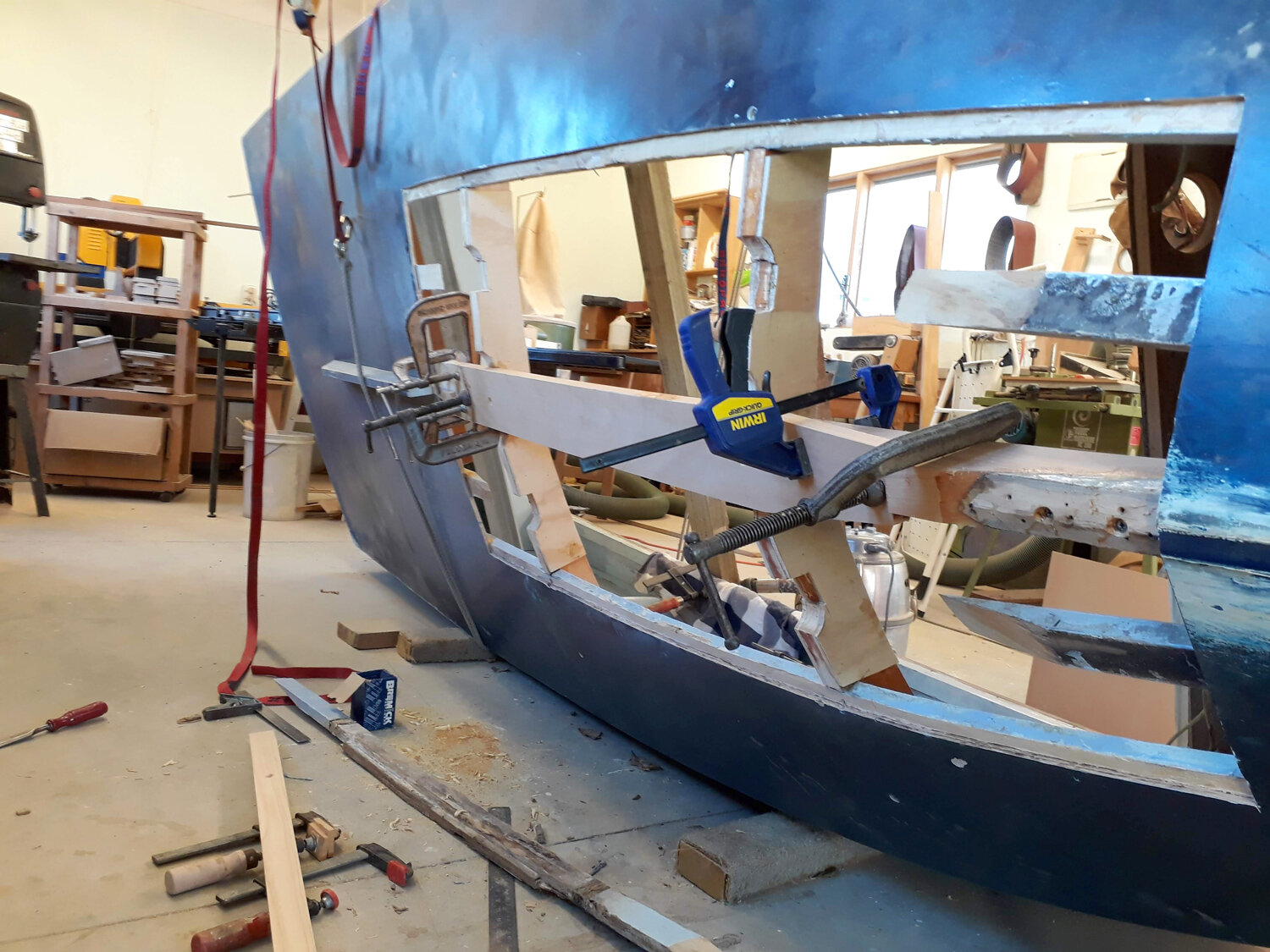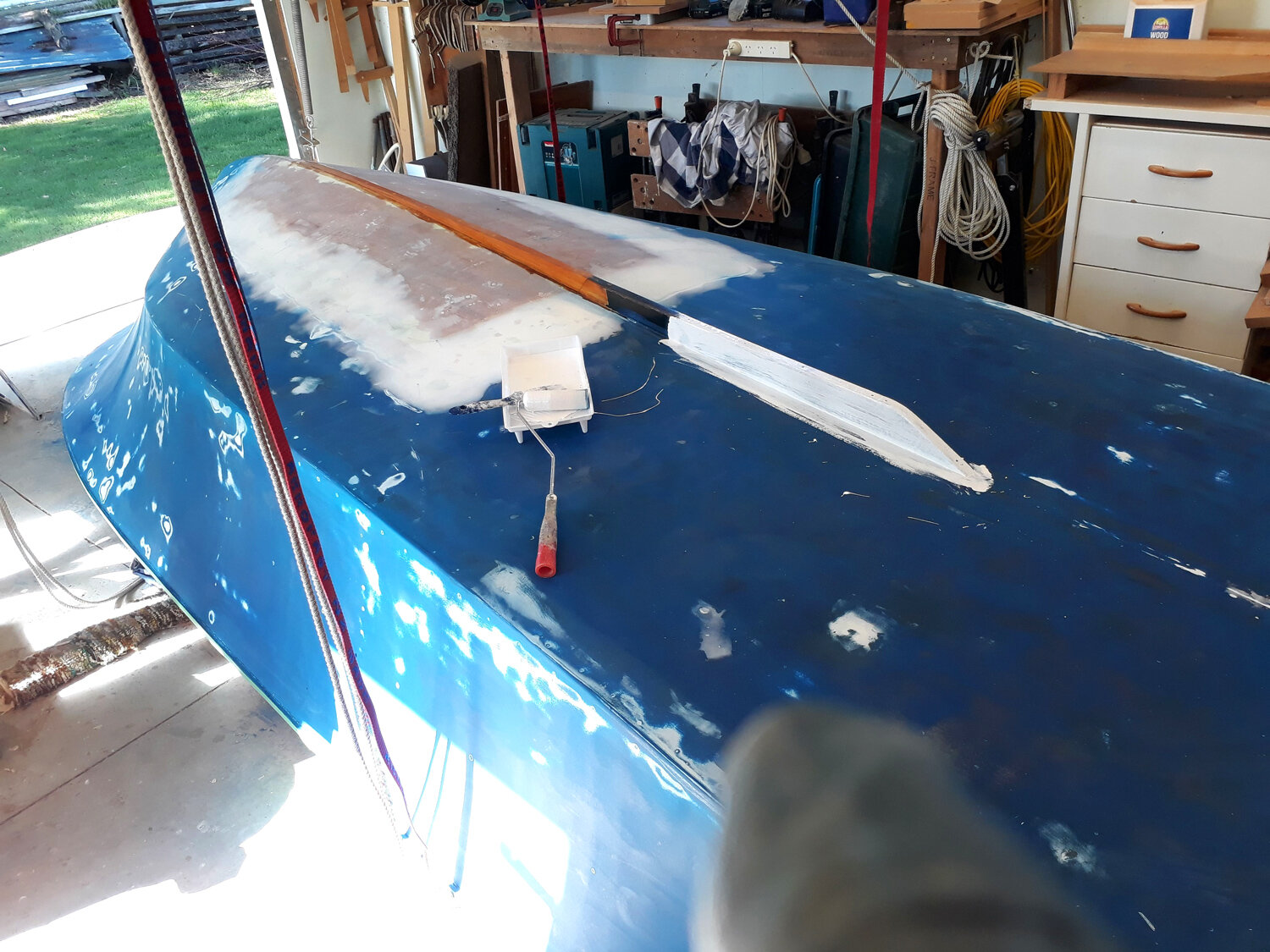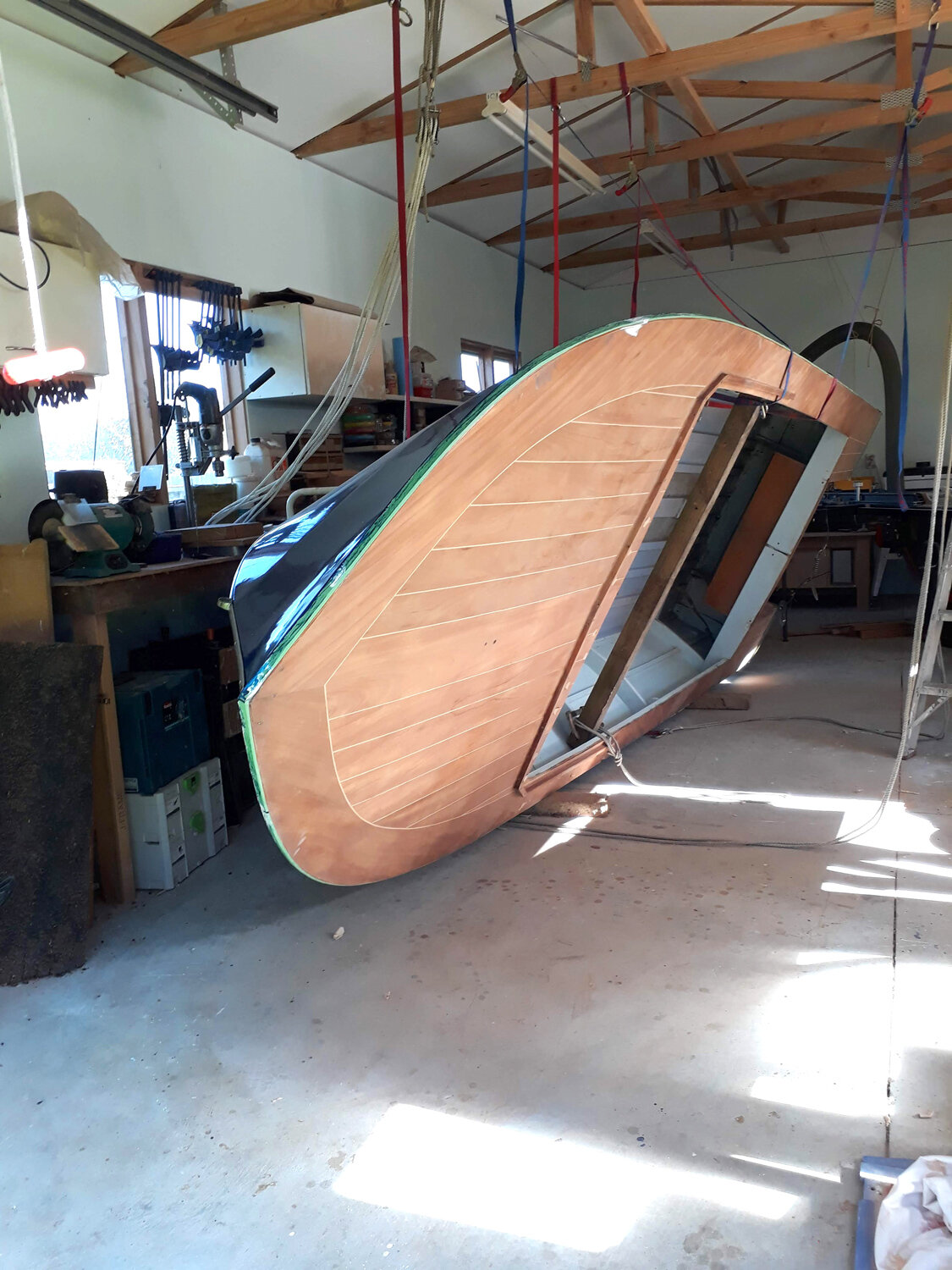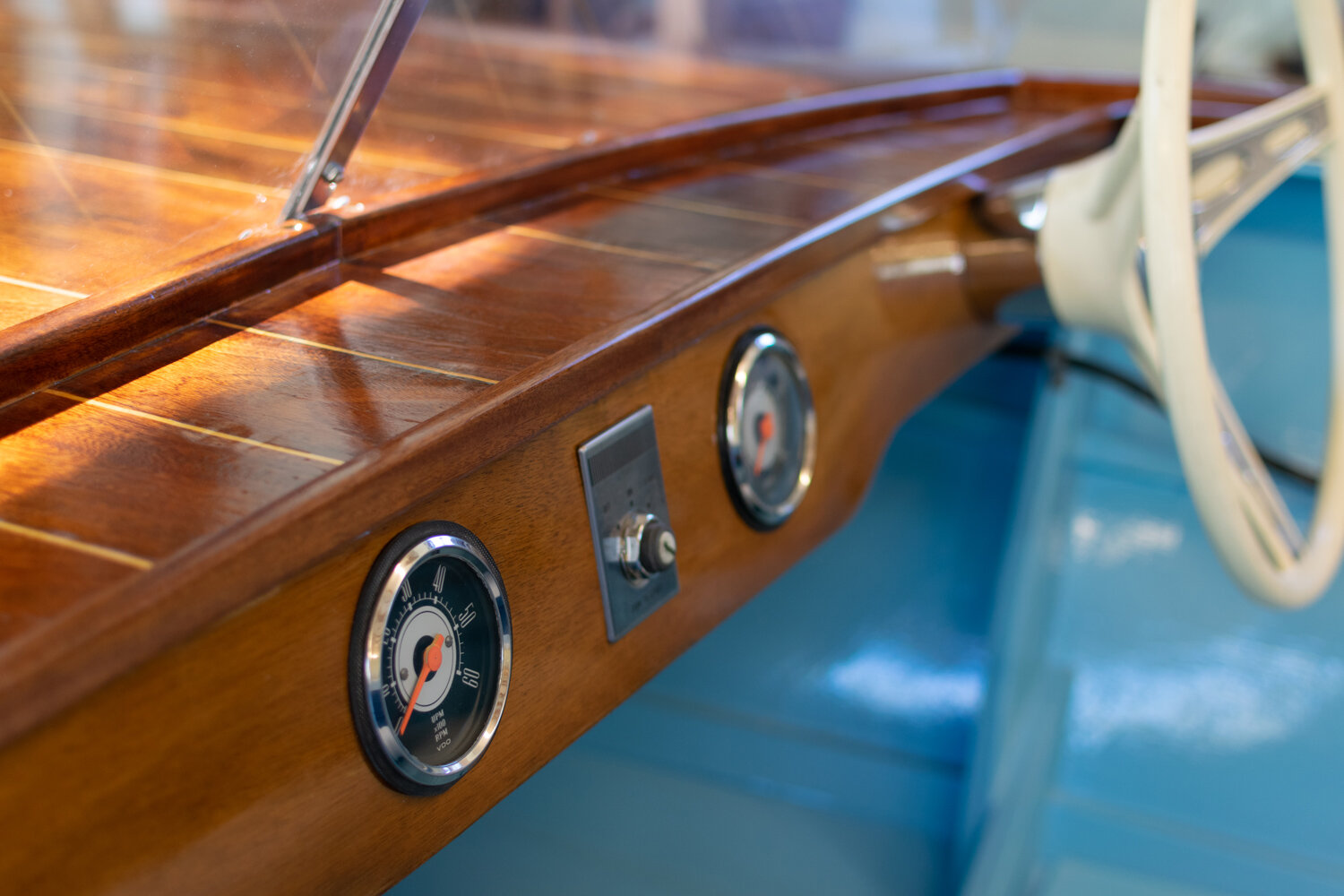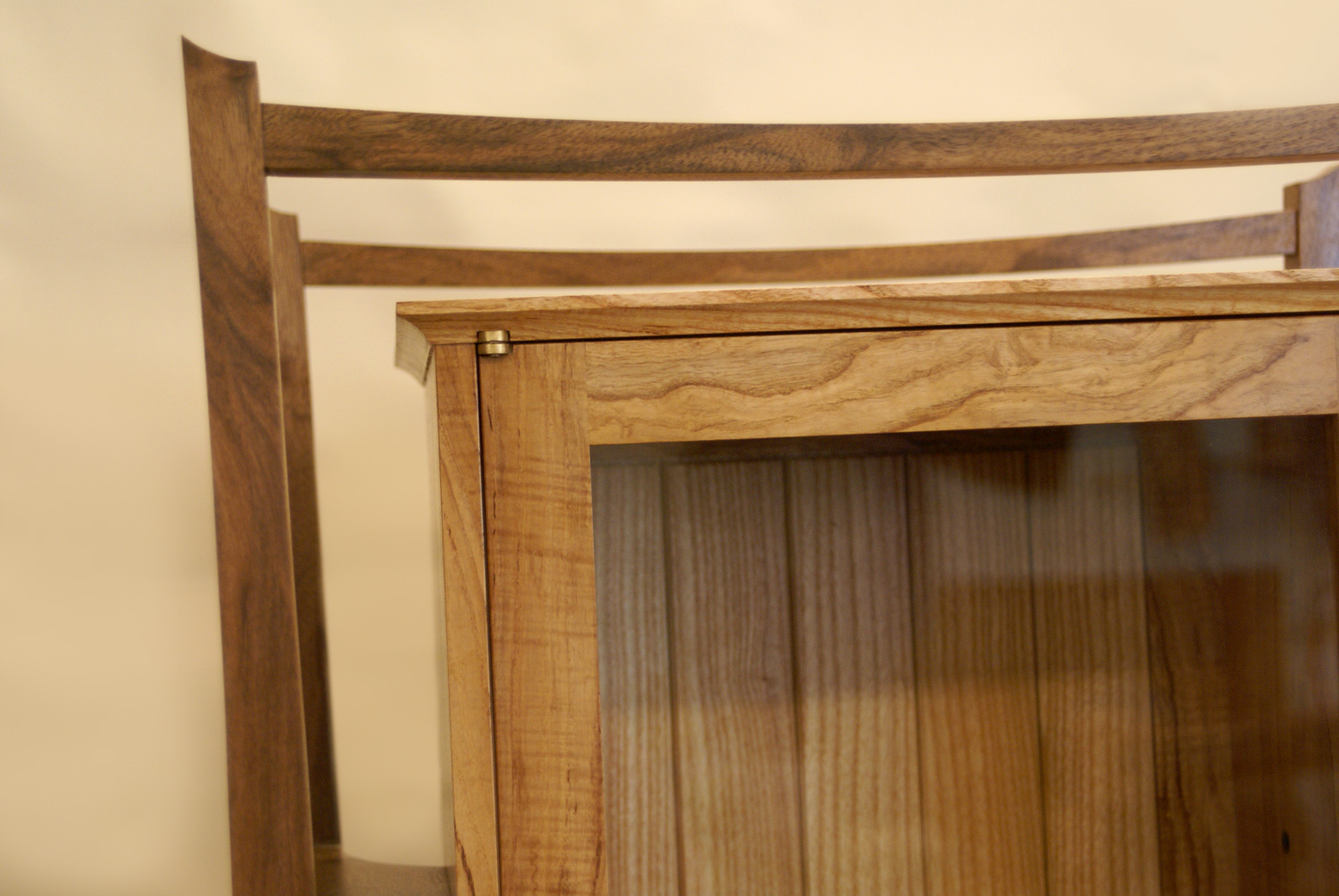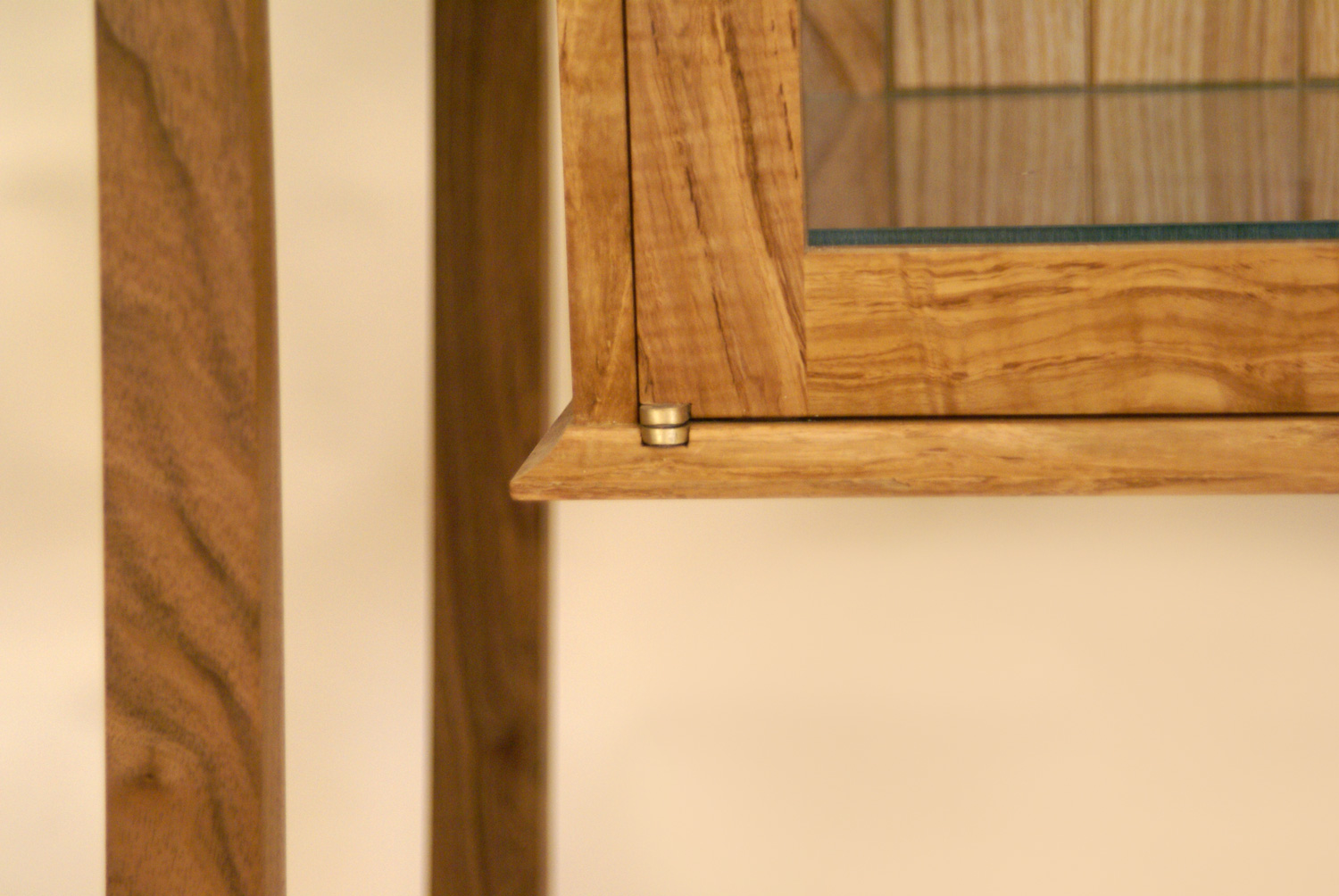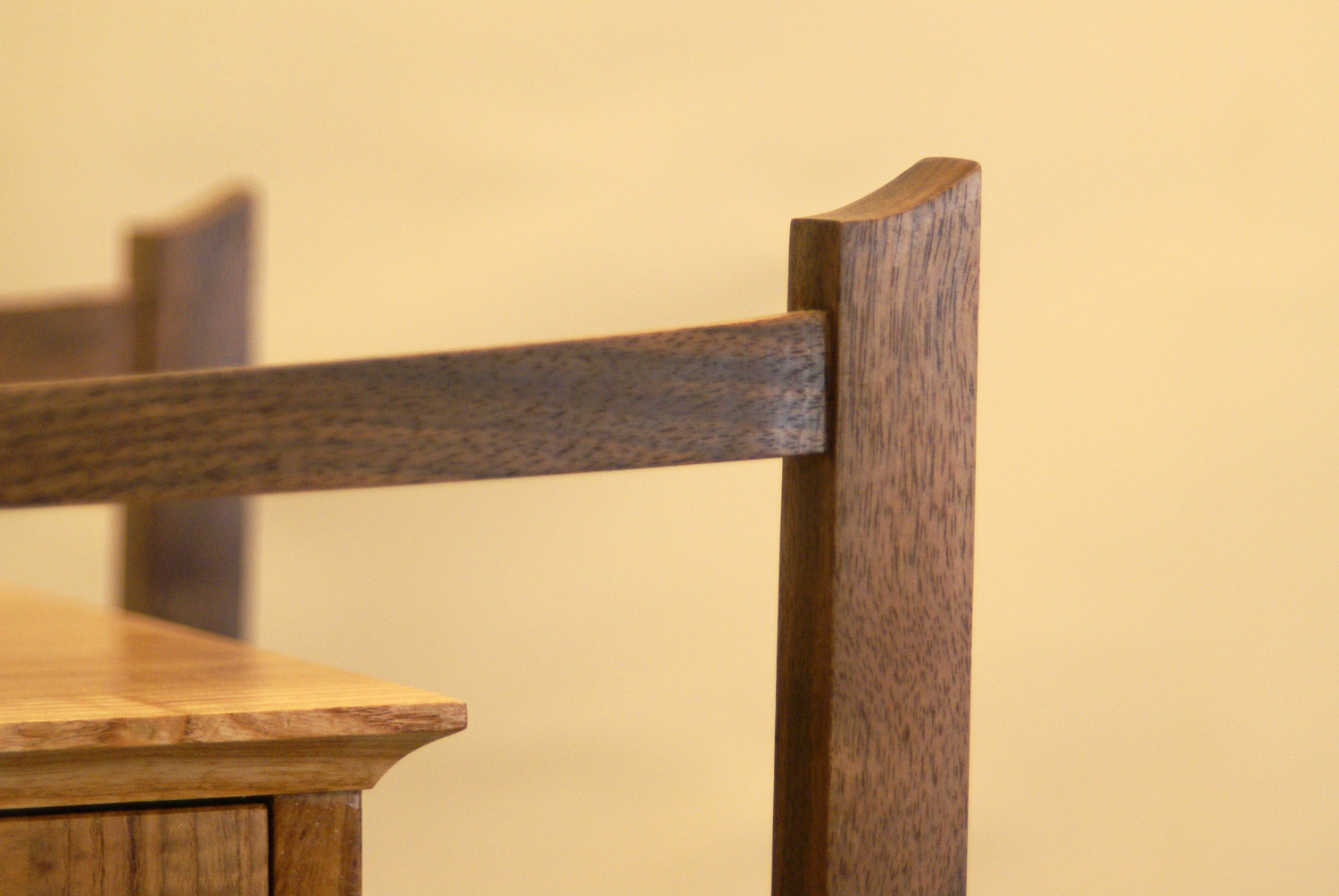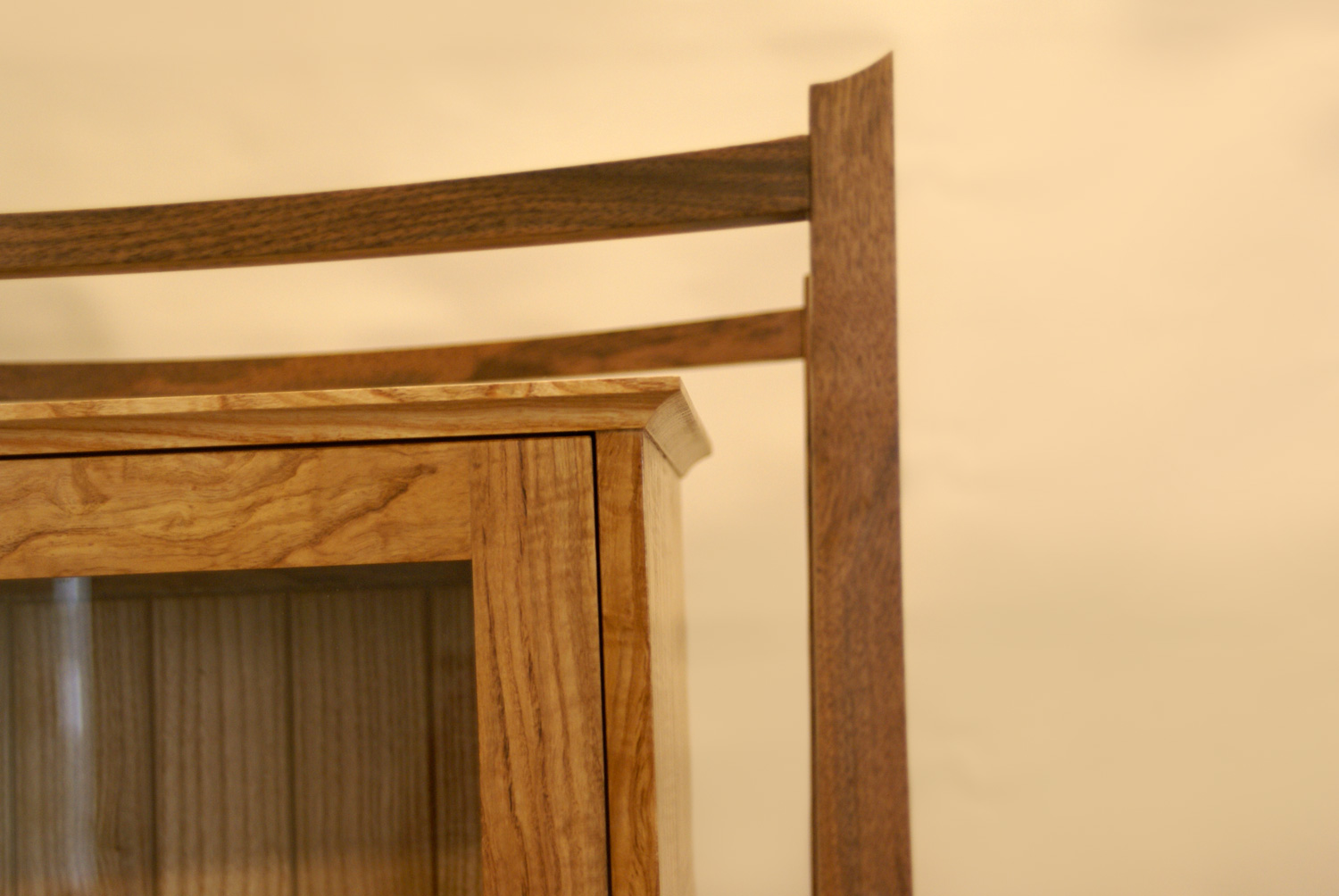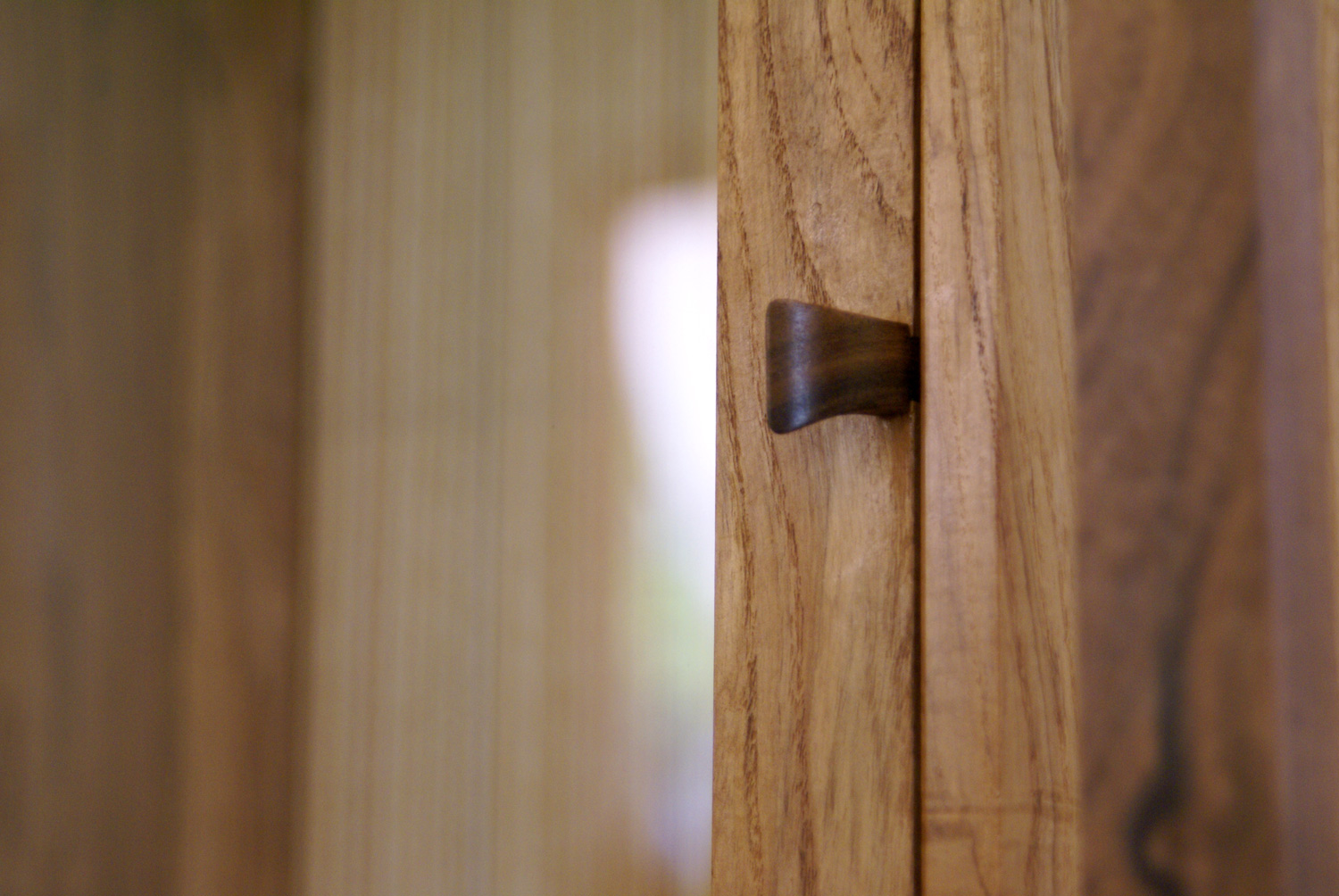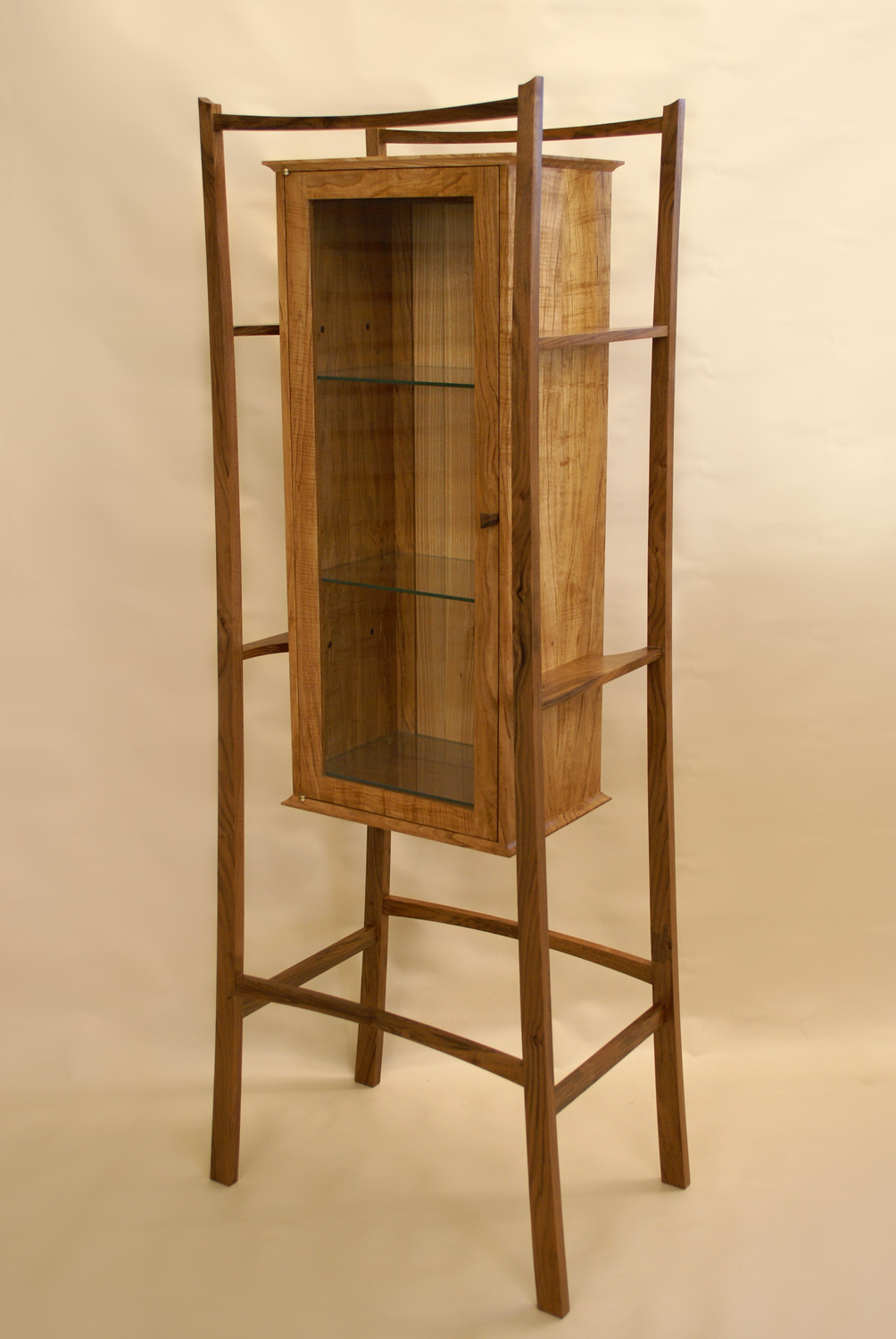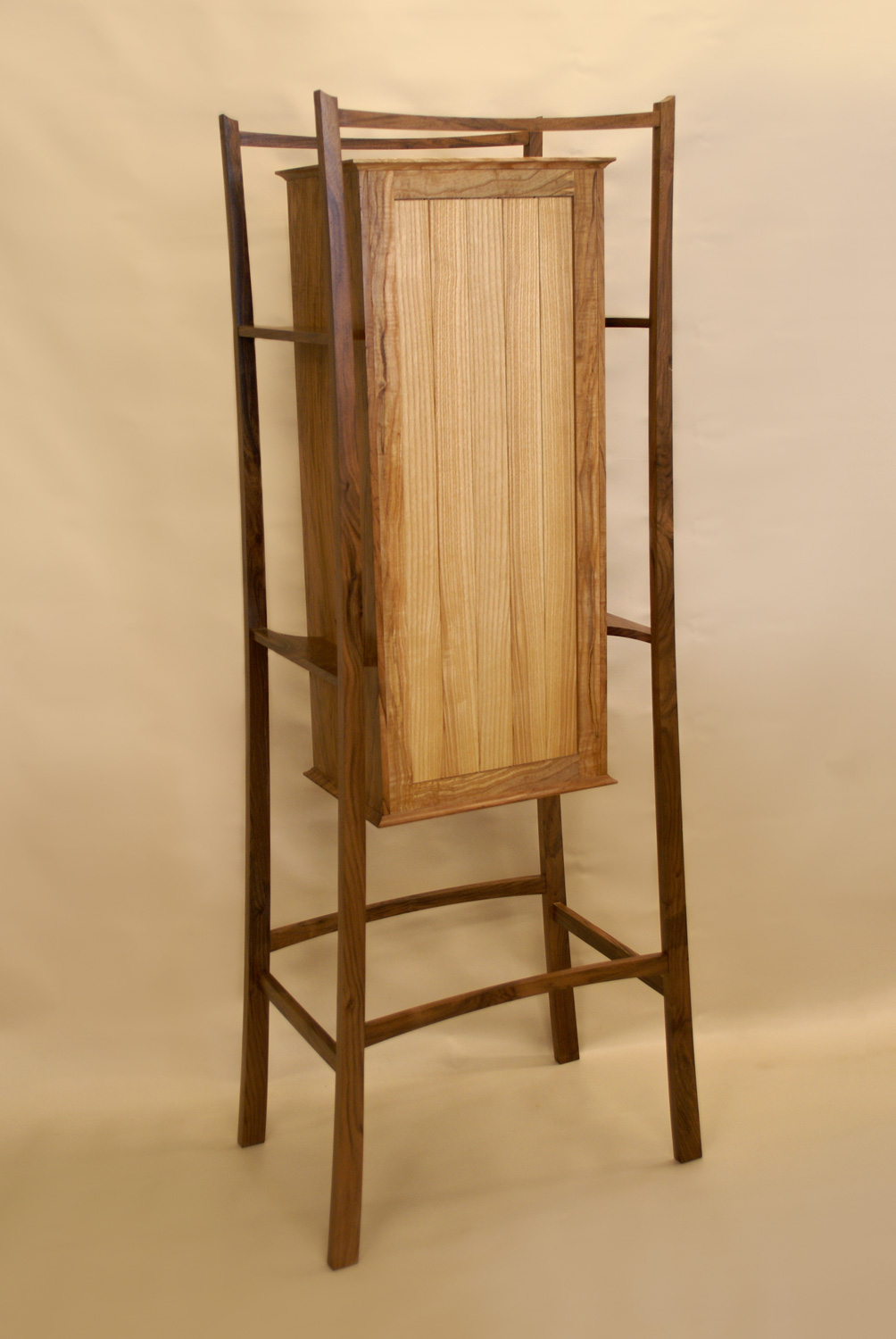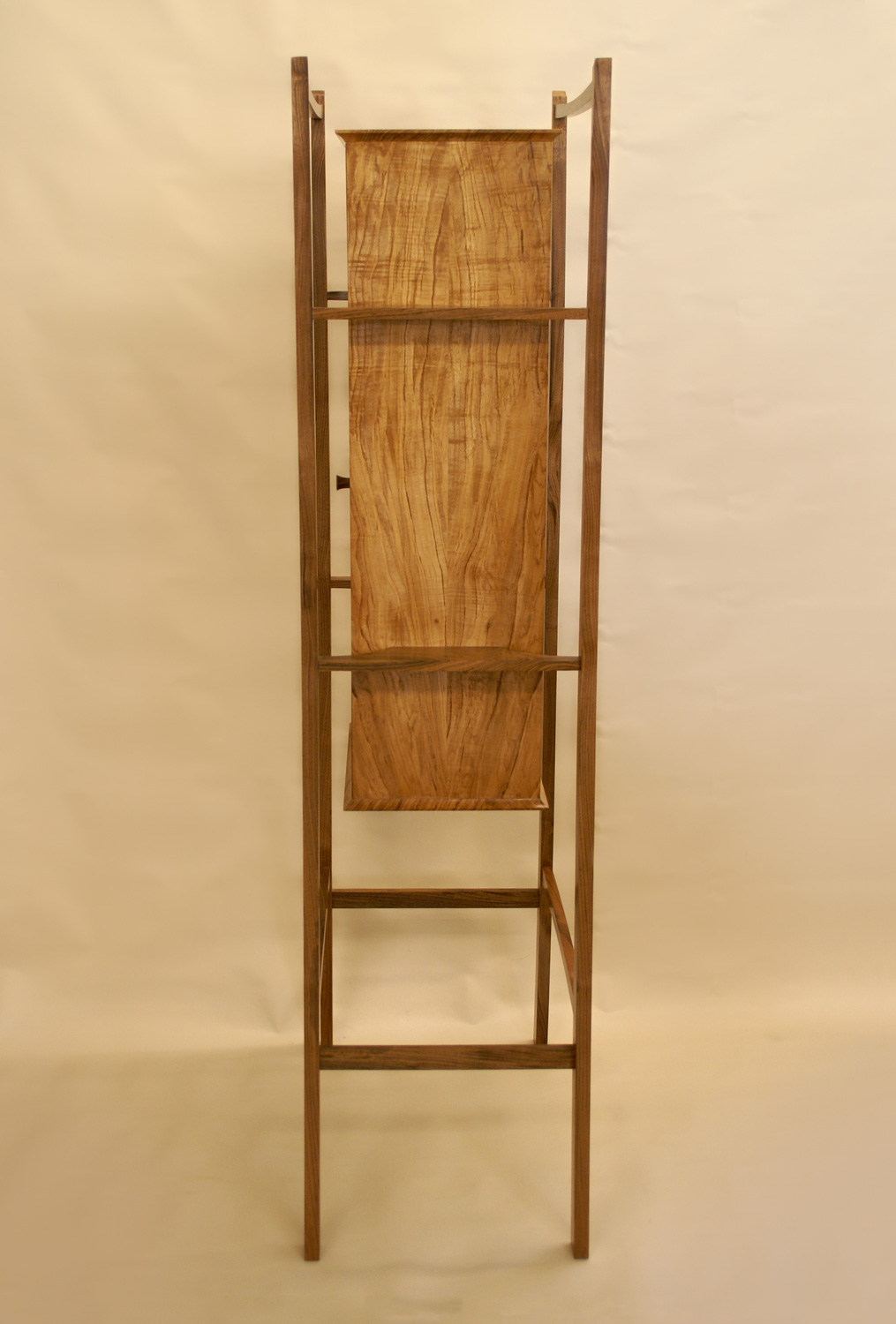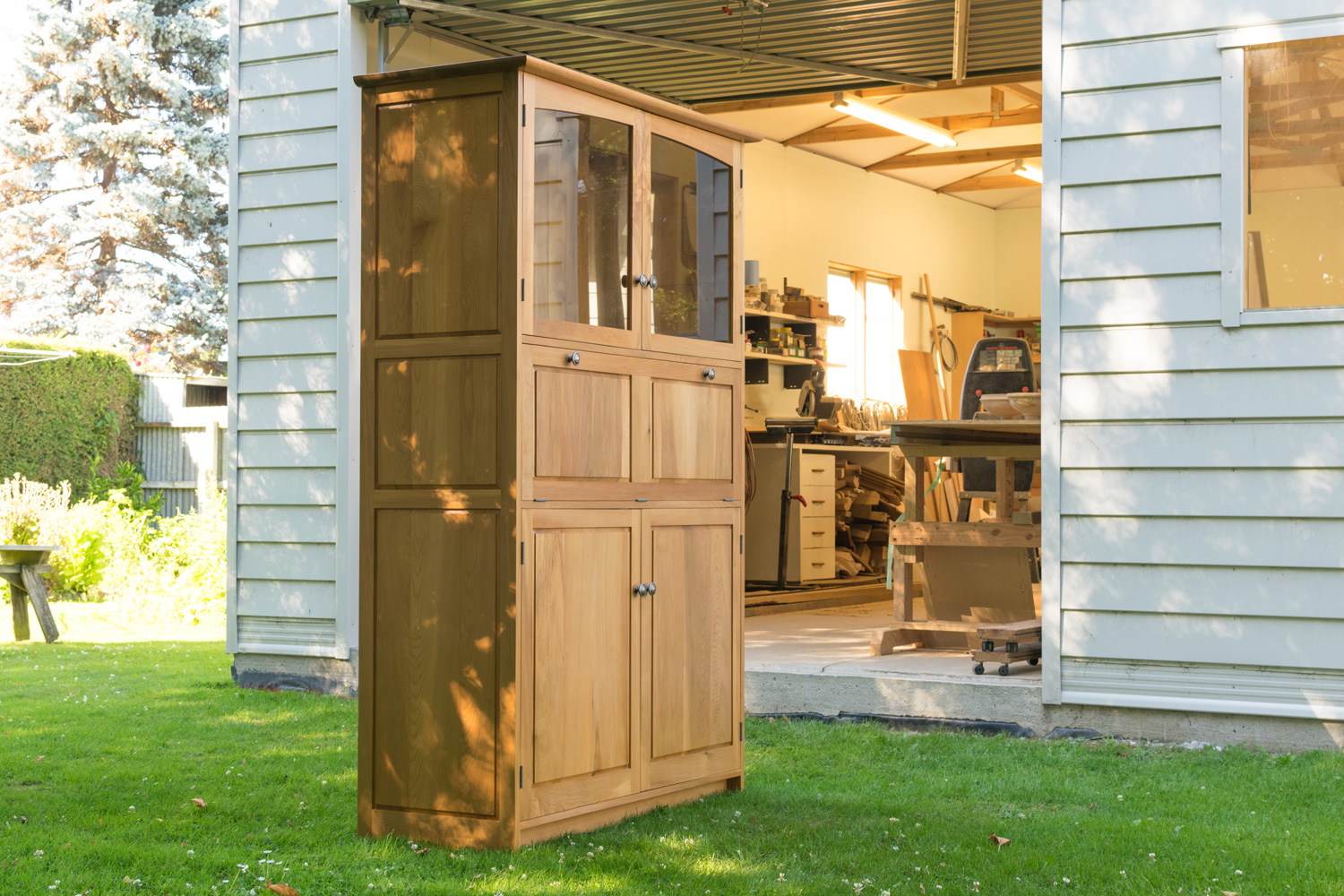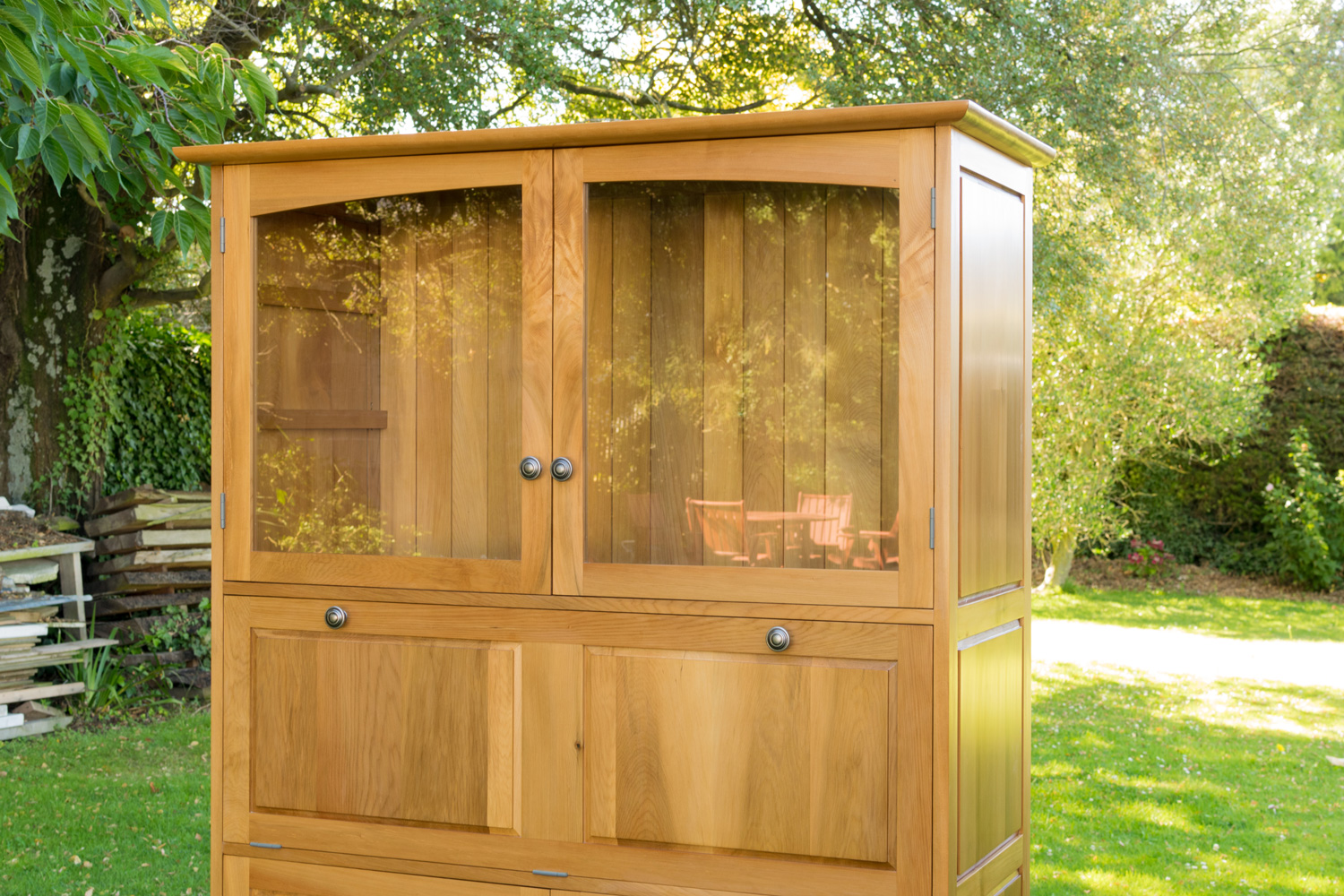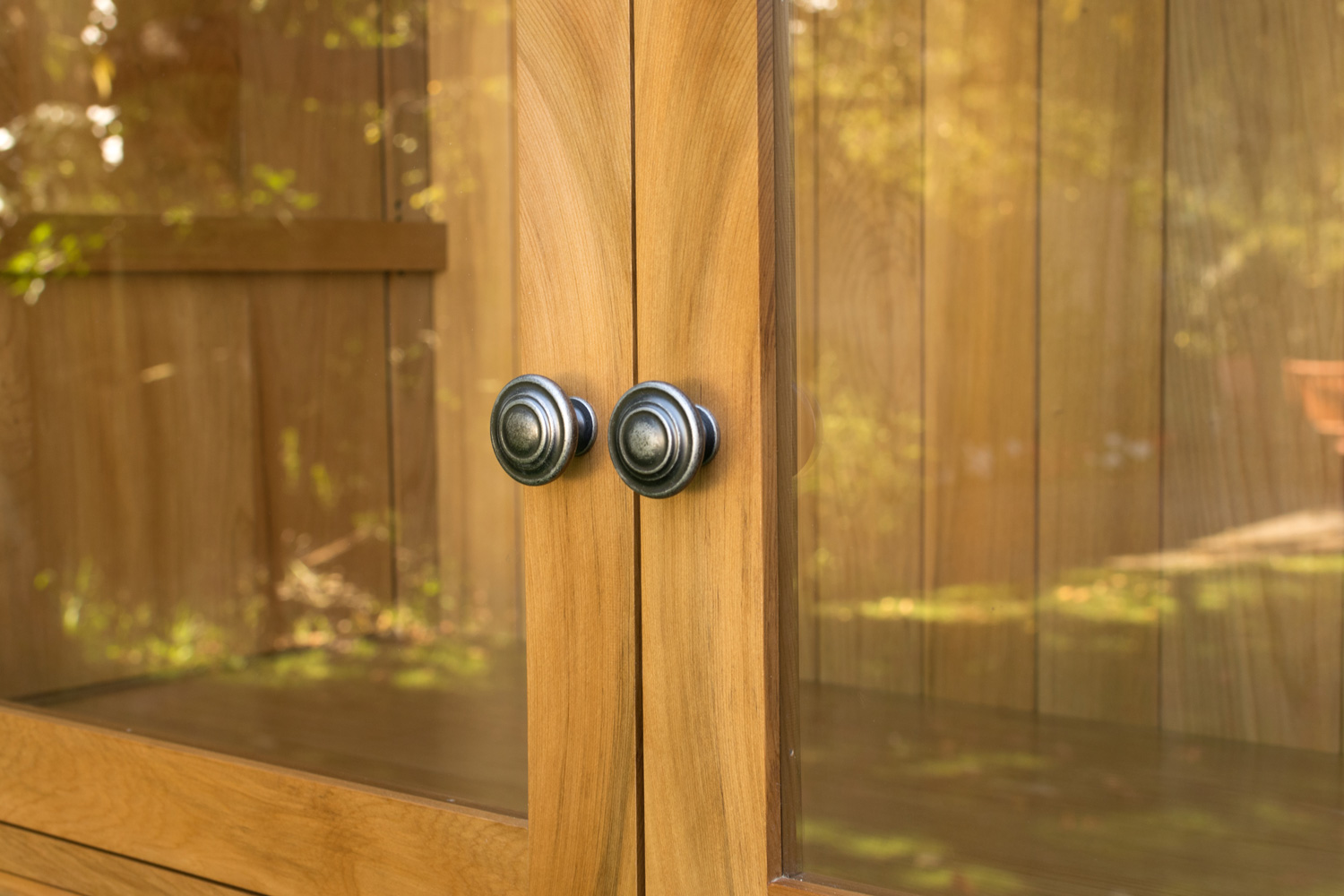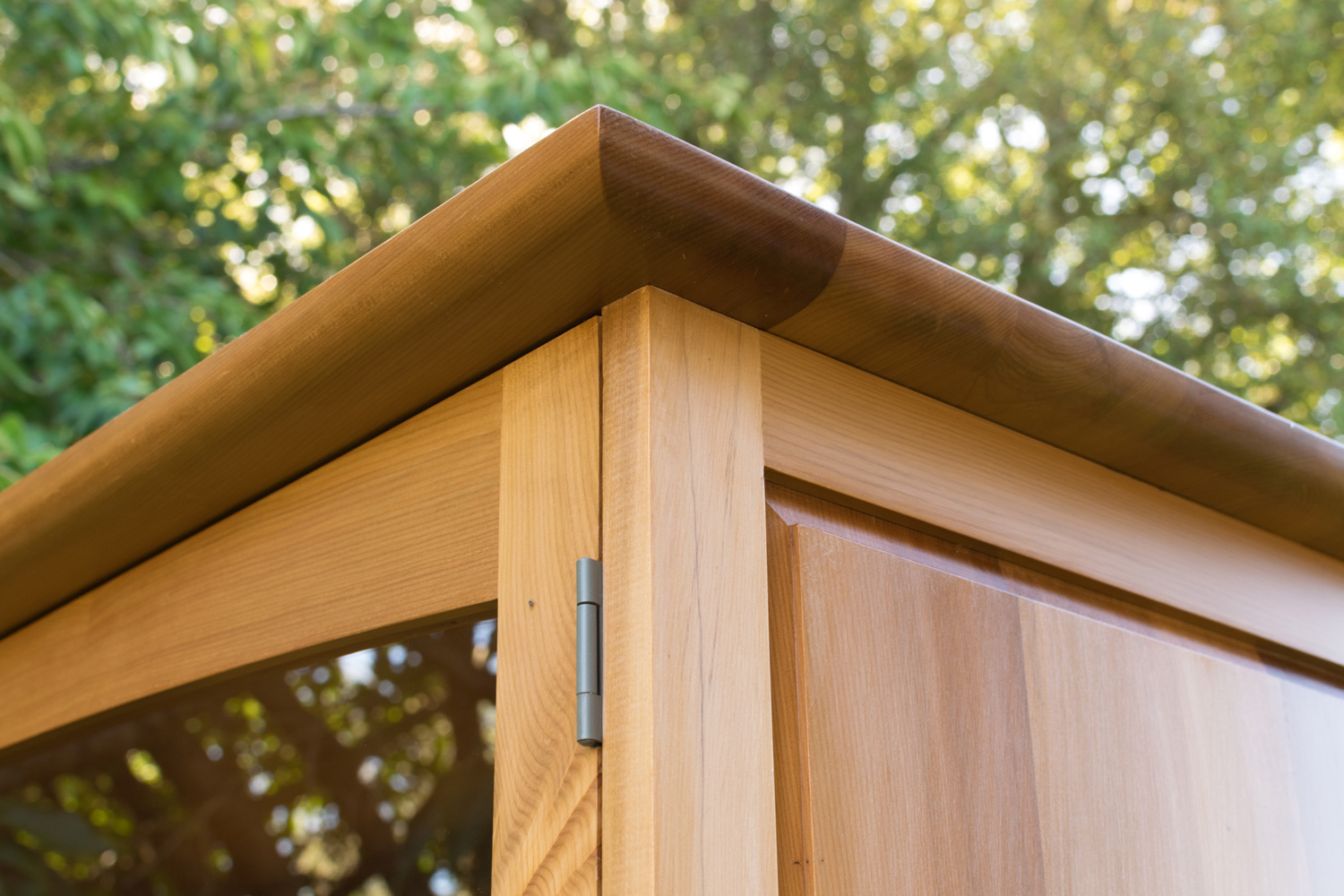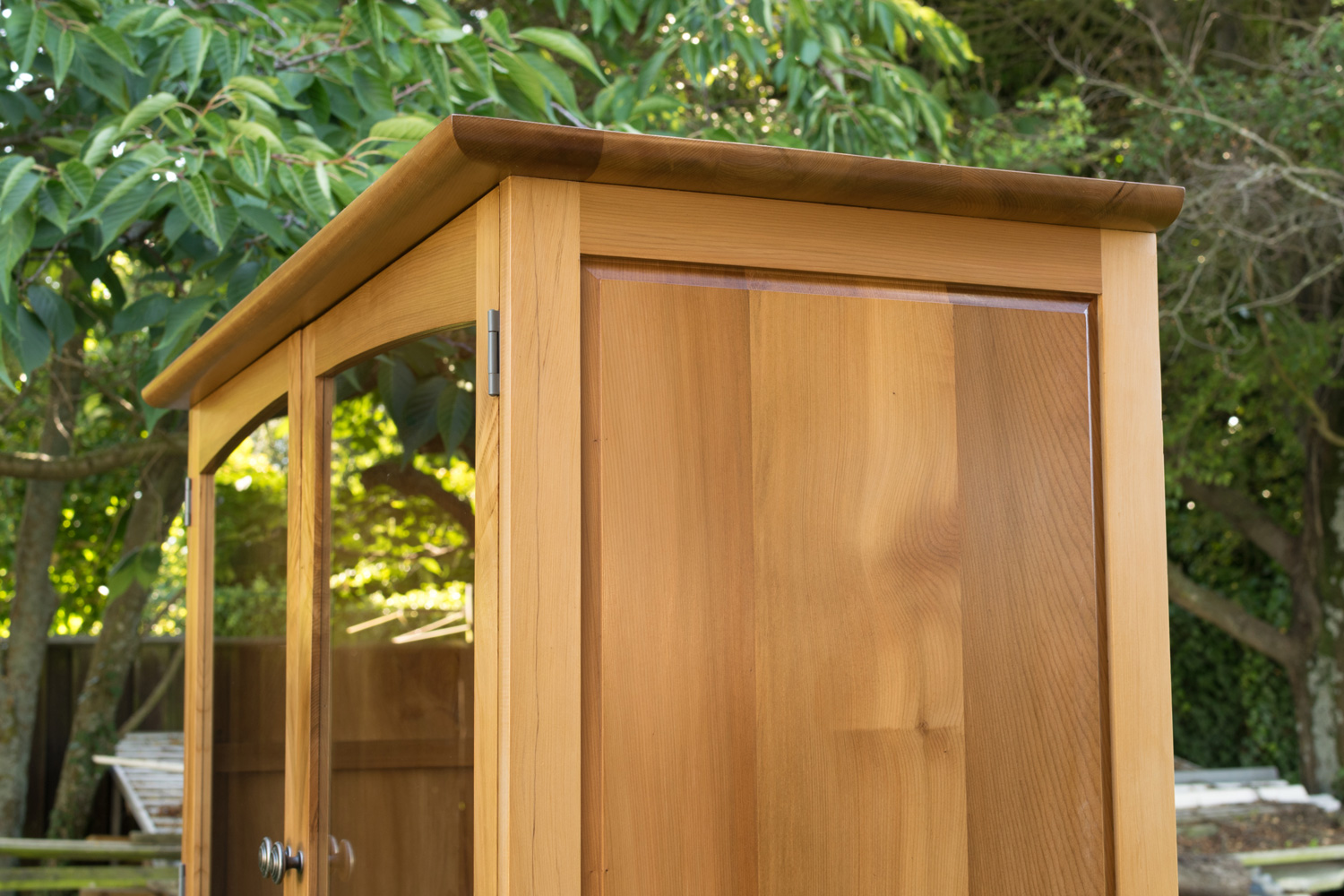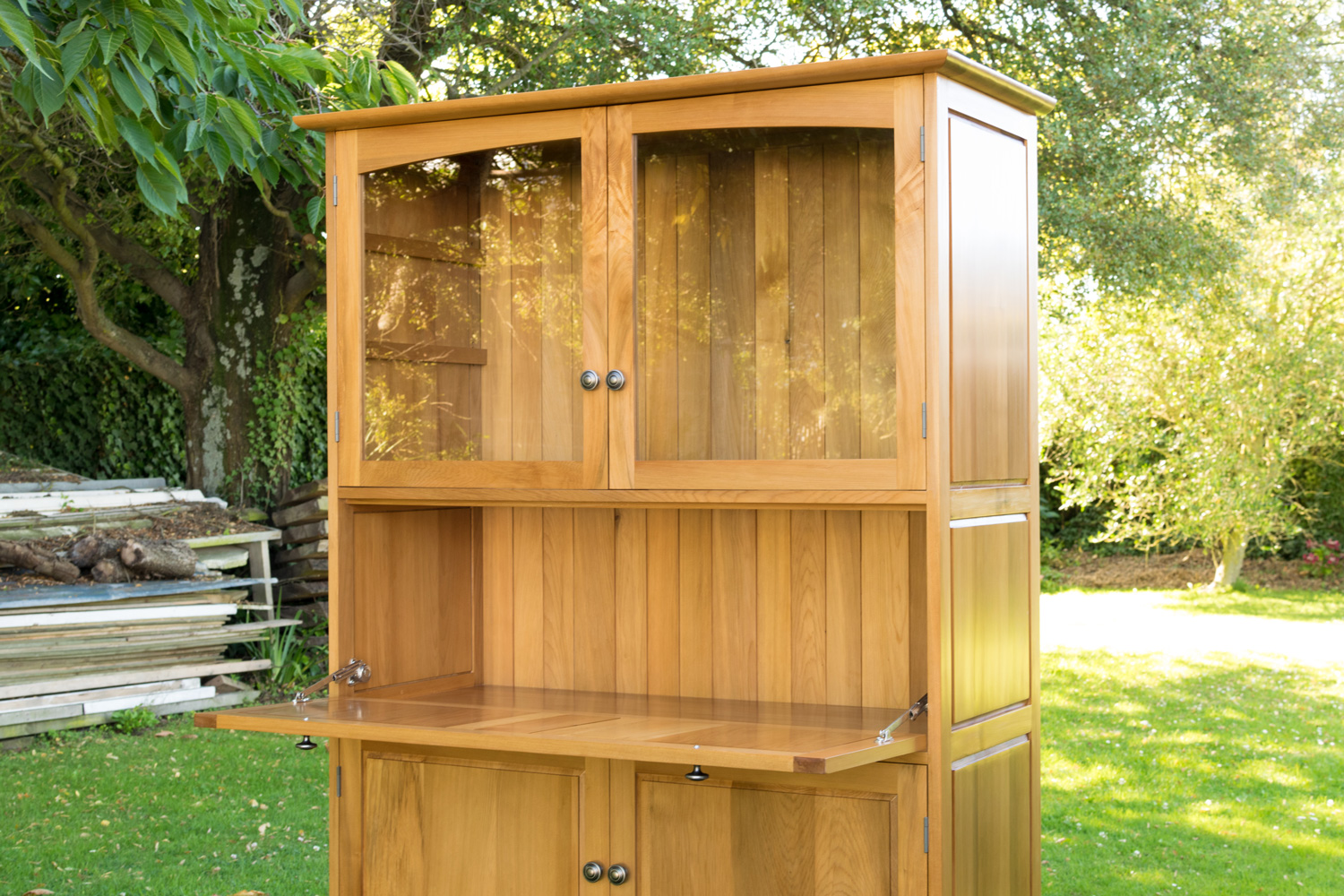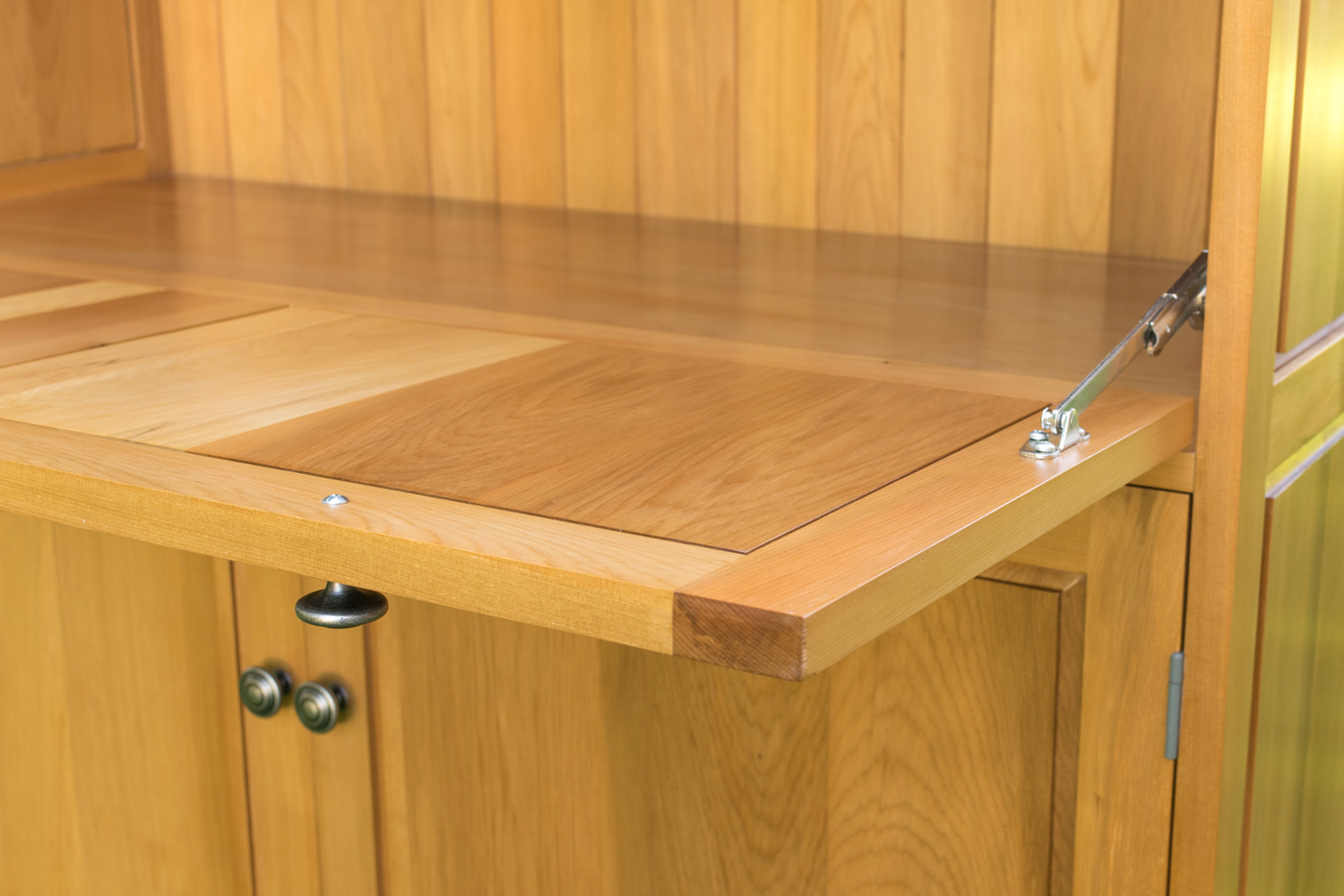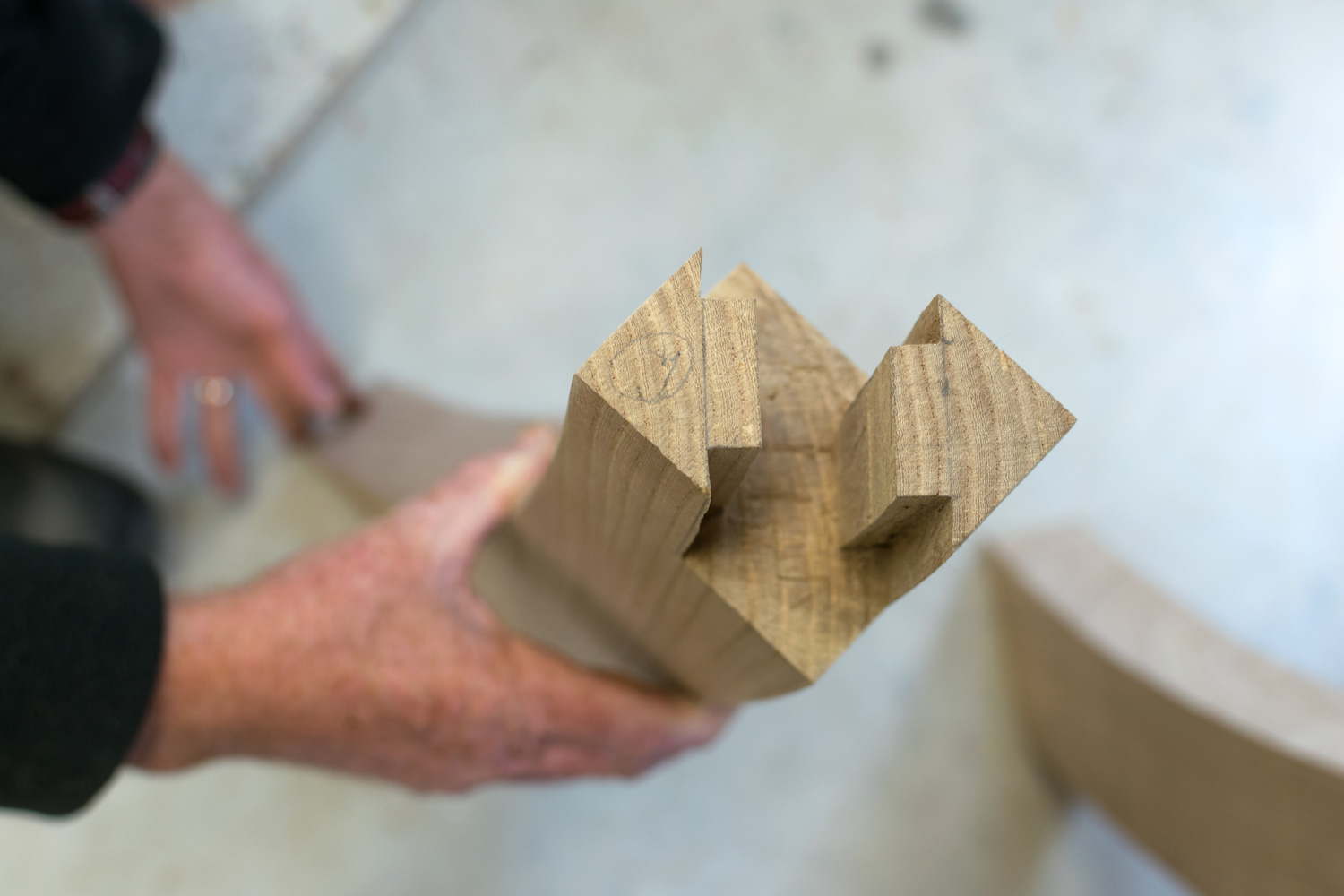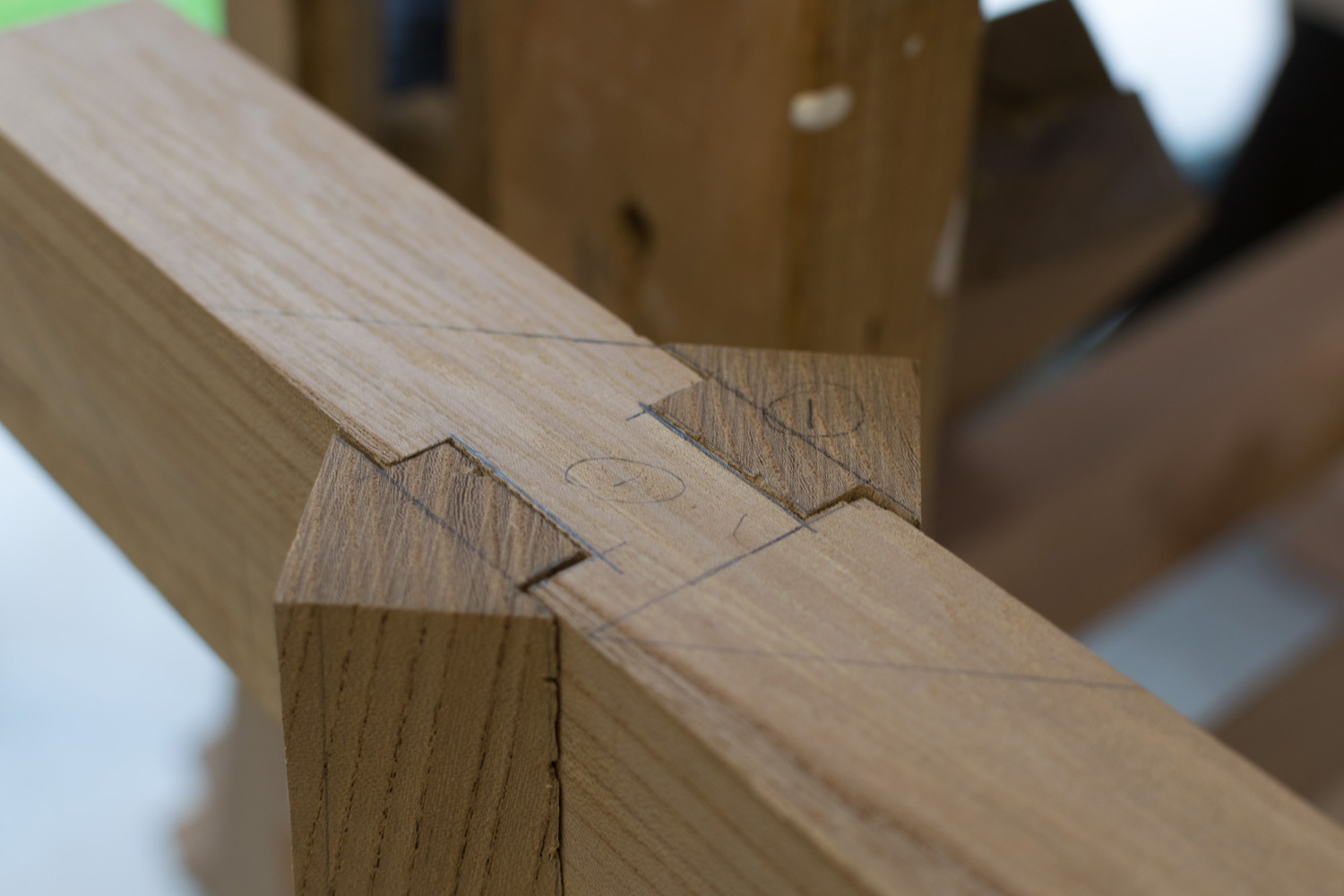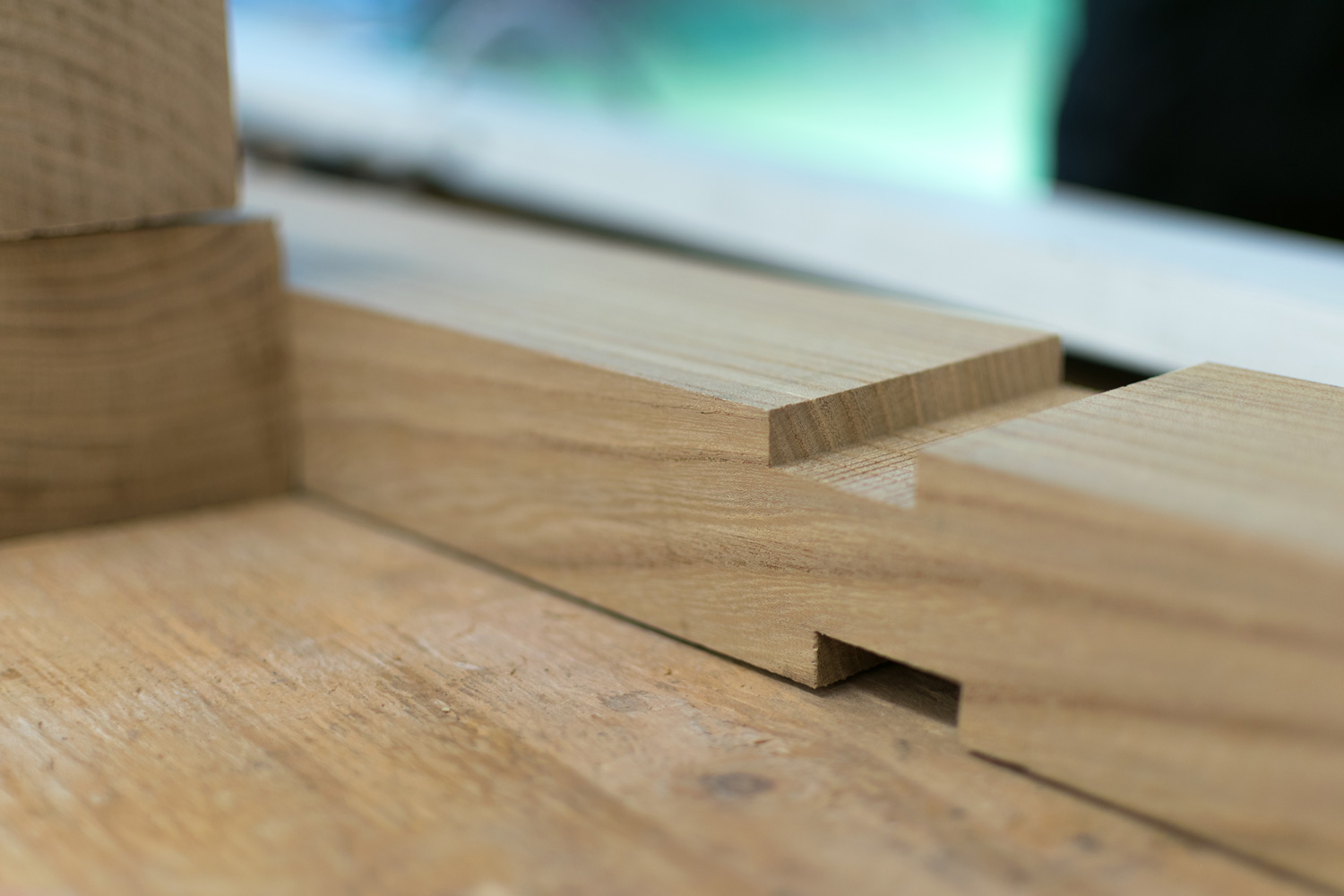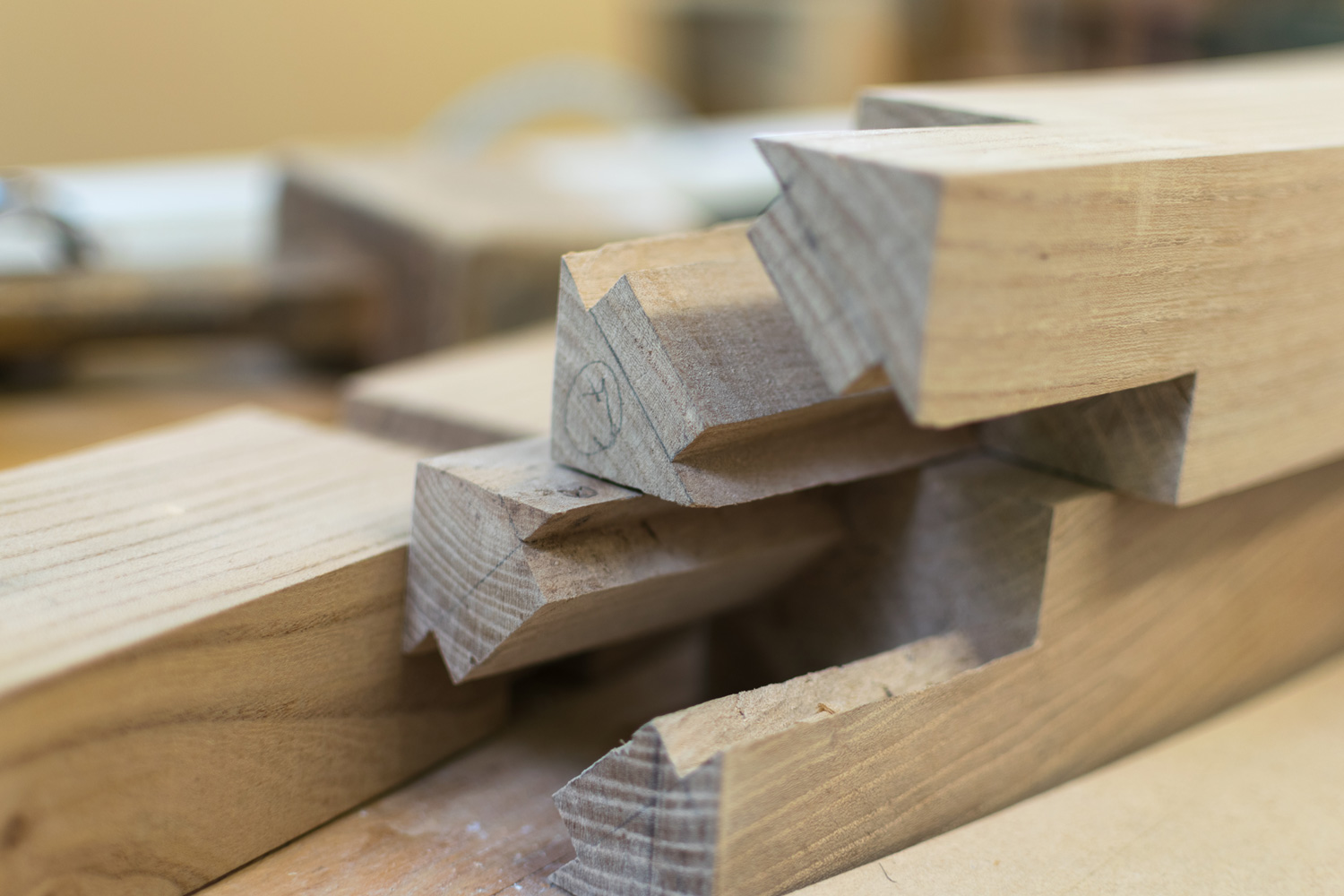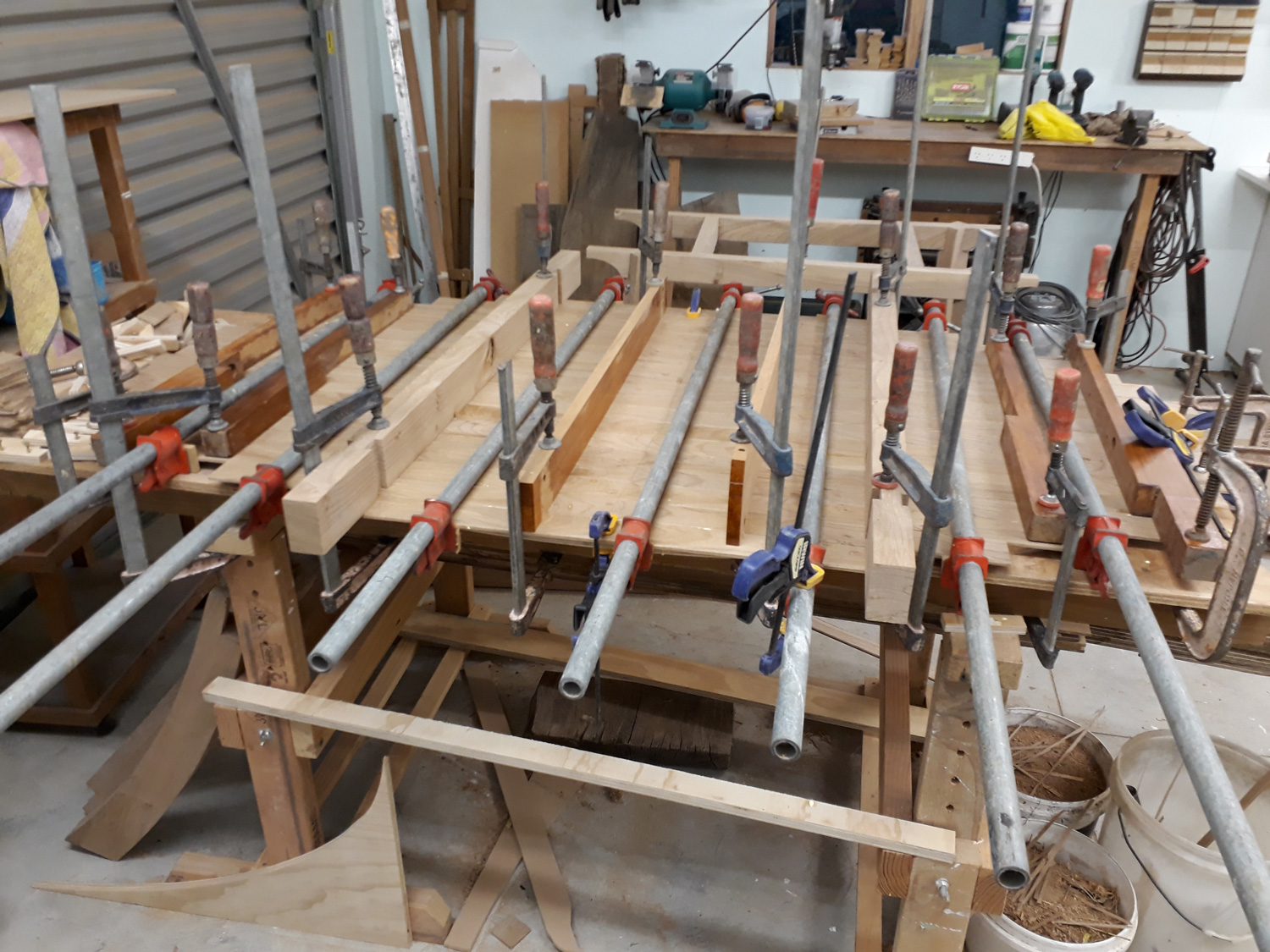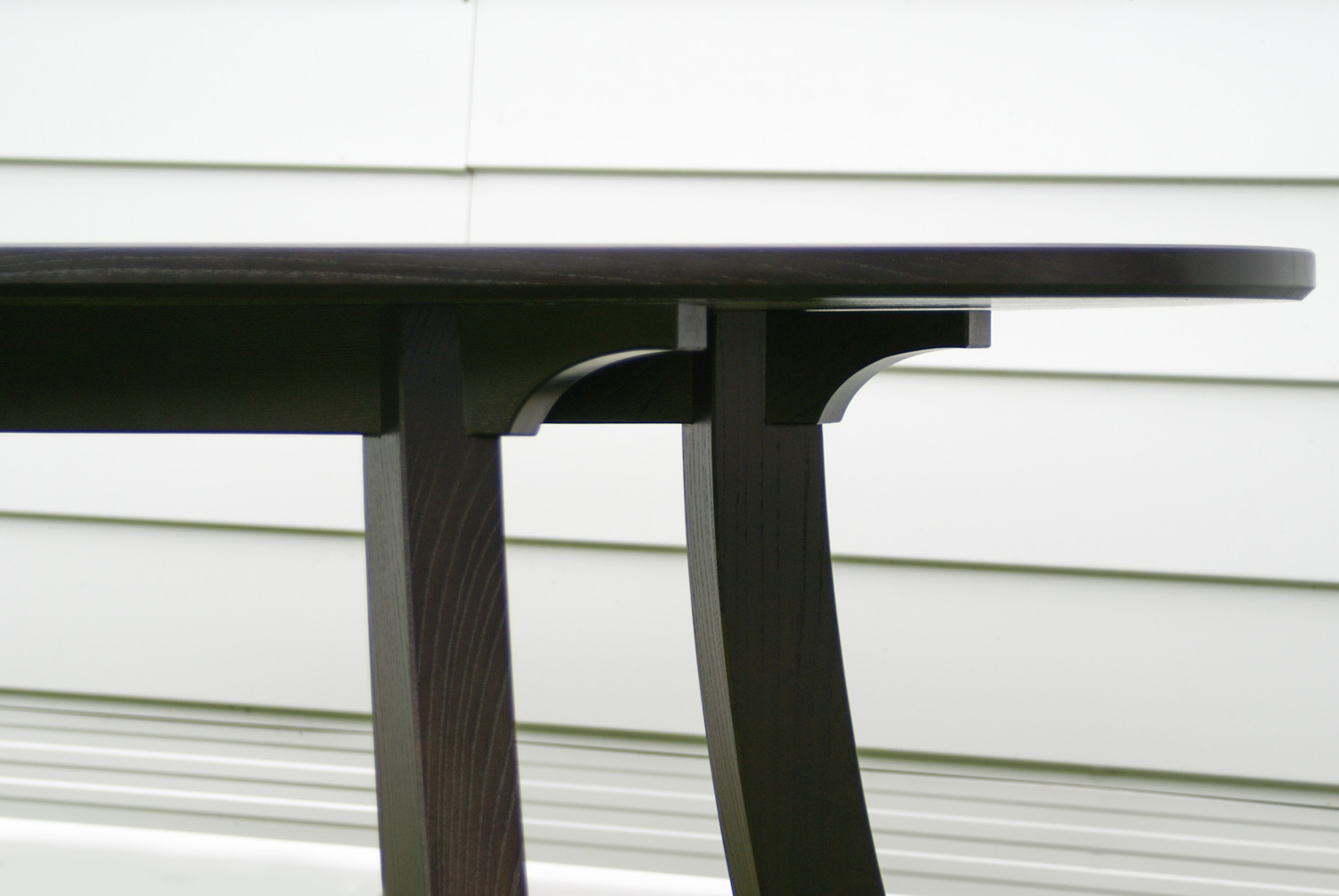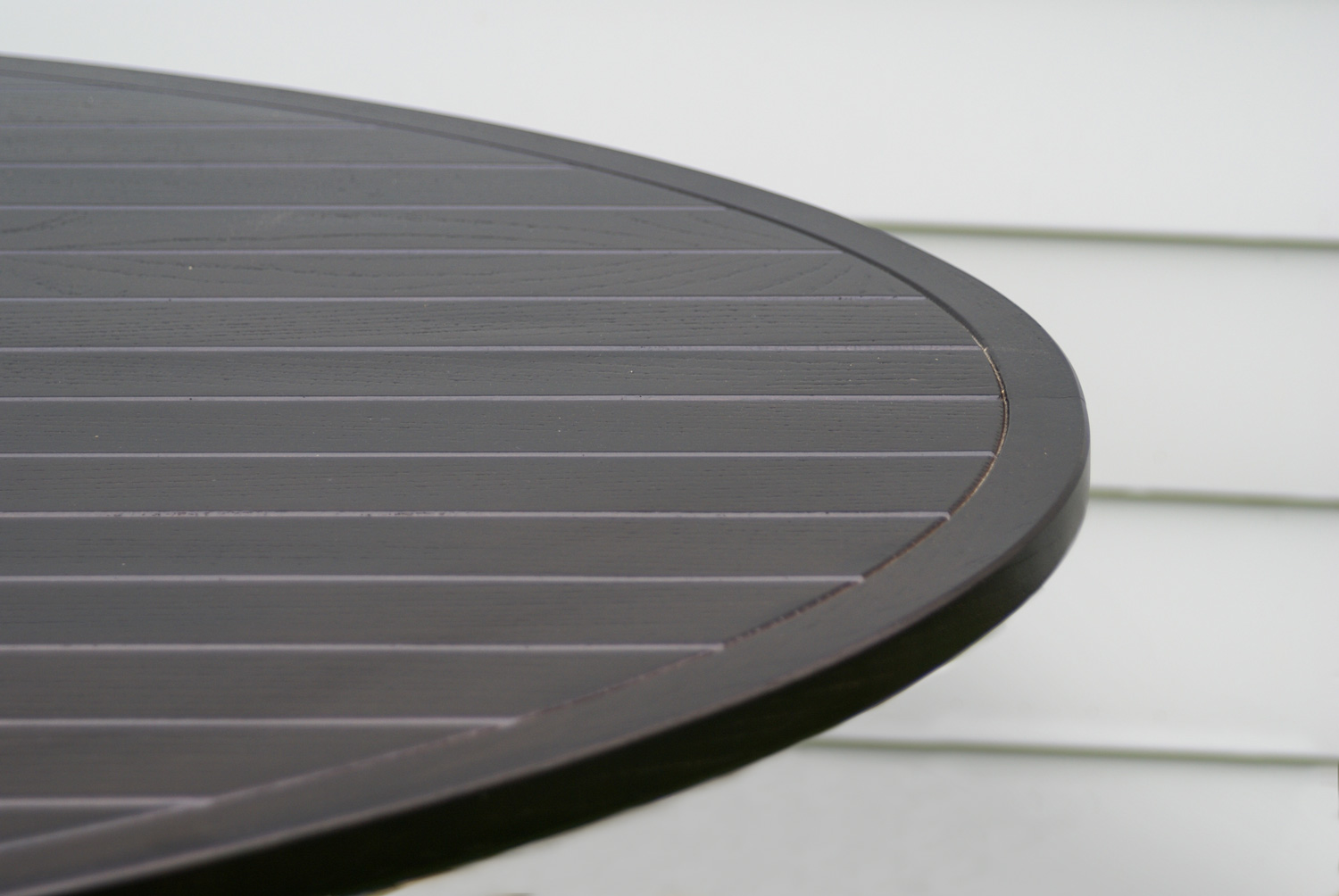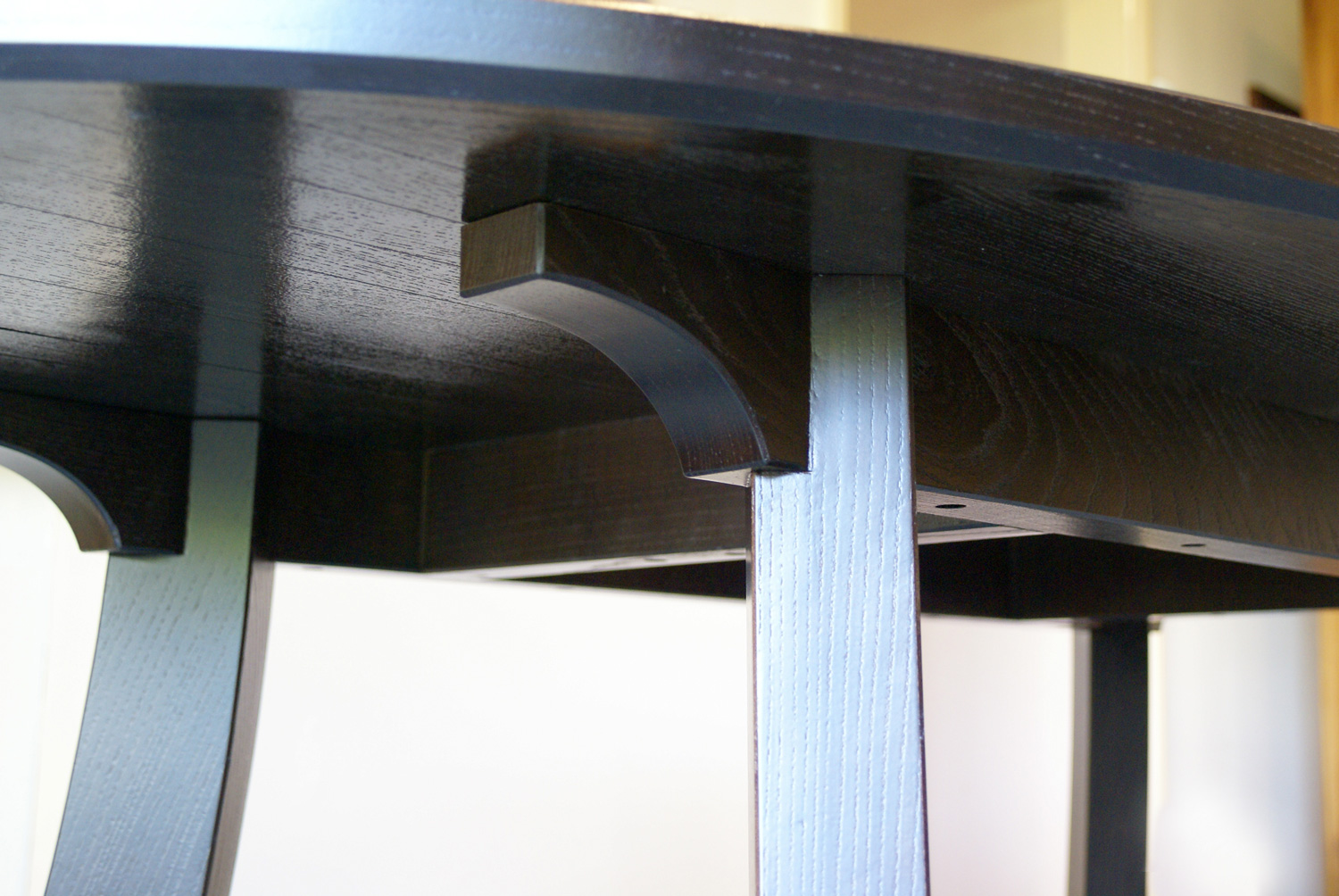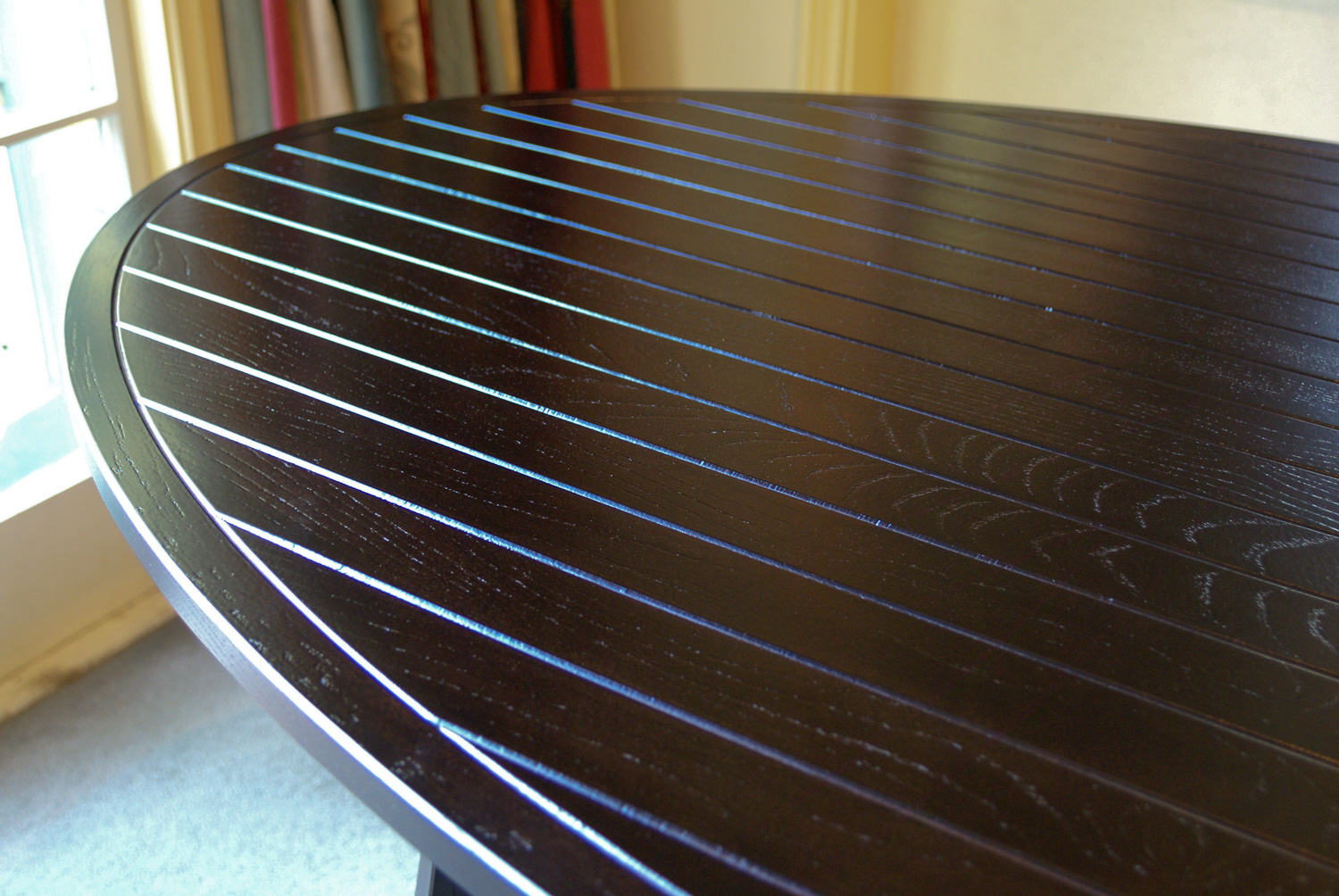I was asked to make two folding cockpit tables for a large yacht that was being built. I was supplied with detailed drawings by a well-known yacht designer. These drawings were very detailed and I had to follow them closely. The timber is teak, which is done as a veneer in a herring bone pattern over a light weight plywood base. I had to cut my own veneers as the standard veneers are too thin for something like this. The darker timber that makes a pattern around the edge is called wenge. The outside edge is solid teak.
It took quite a long time to lay the veneers in the herring bone pattern, making sure that the grains flowed from the folding section onto the main part. The whole project is then finished with a high gloss marine finish.
When the boat goes to sea, you fold the ends in, which makes the tables smaller and easier to get around. There is also a fiddle around the edge when folded, which stops things sliding off when the boat rolls at the sea.
The table tops will mount on pedestals which are made from aluminium and fibreglass.
One end of the table folded up.
Both ends folded up for when the boat is at sea.






